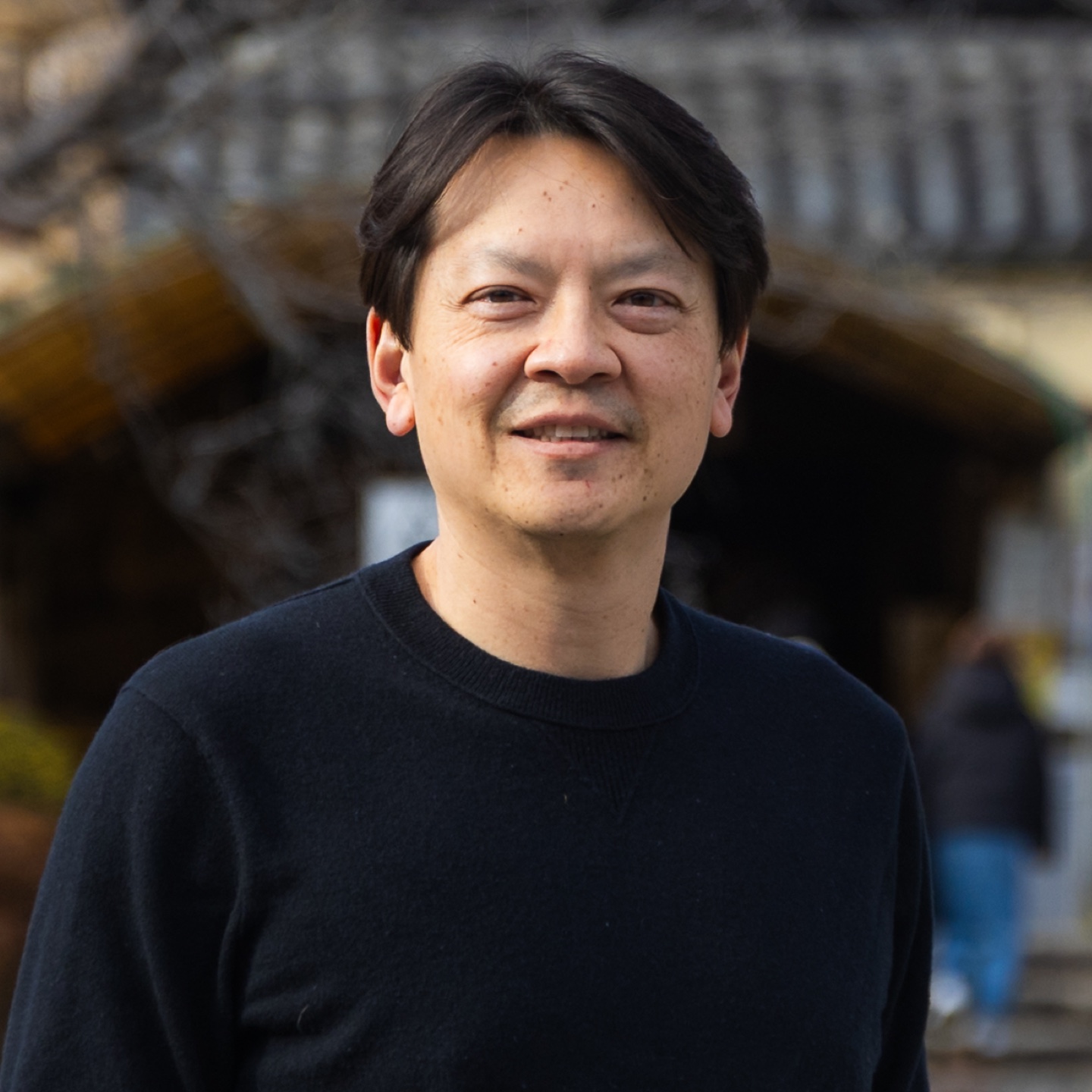Explore the picturesque Noto Peninsula at the tip of Ishikawa prefecture with its spectacular rocky coastlines and sceneries. Learn about its rich lacquerware history and experience zen at historical temples and shrines.
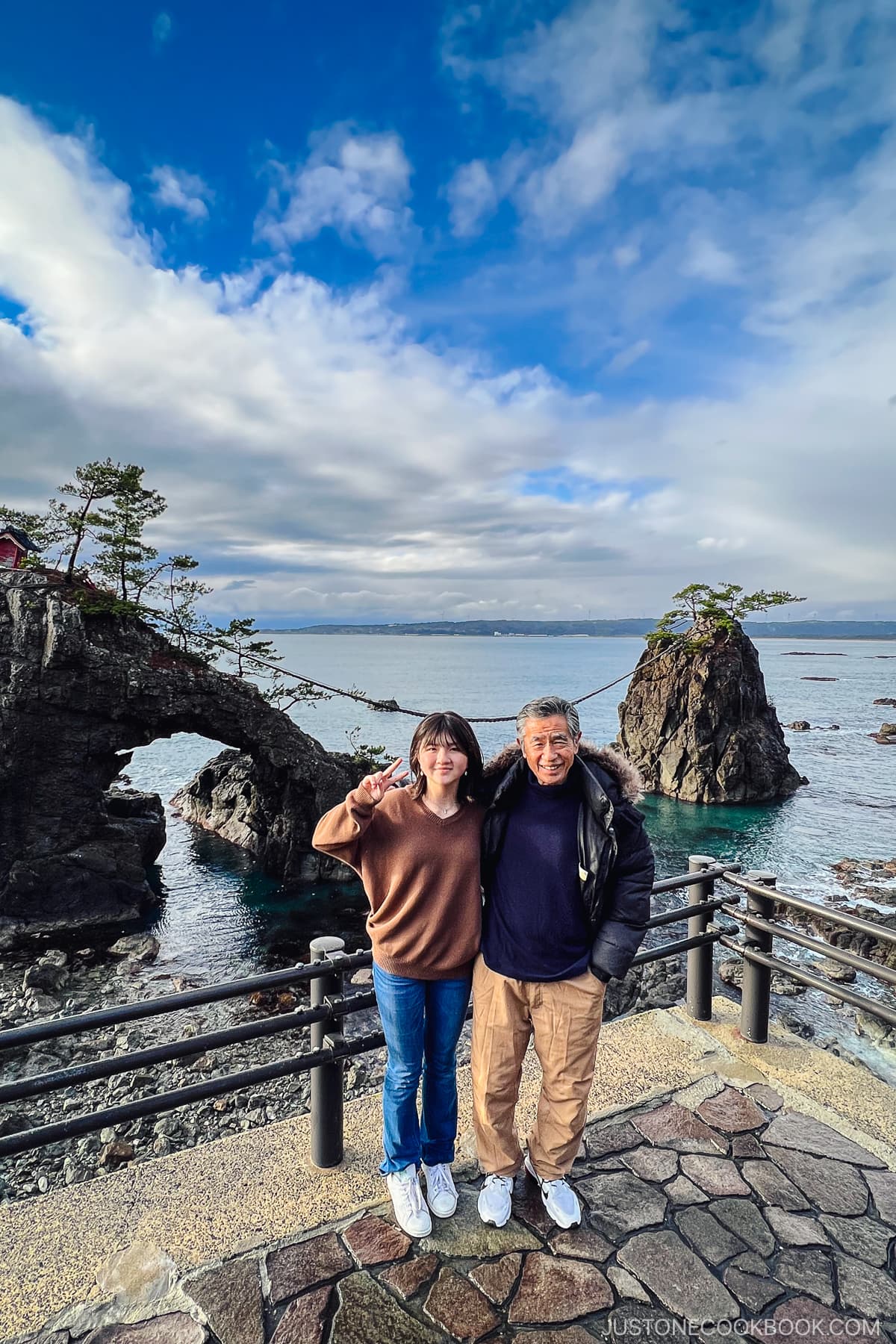
Noto Peninsula (能登半島) is a popular tourist destination located at the tip of Ishikawa Prefecture, protruding into the Sea of Japan from Japan’s mainland. It is known for its long coastline and natural sceneries, including beaches, rock formations, and renowned Shiroyone Senmaida rice terraces.
Our original itinerary was to drive around the entire peninsula over the 2 days we were there. However, the drive would take at least 4 to 5 hours nonstop and would not give us time to fully enjoy the sights. We ended up skipping Nanao City, Noto Island, and Suzu on the eastern part of the peninsula, and focused our trip on the western part of the peninsula.
Ready to learn more about Noto Peninsula? Let’s go!
Chirihama Nagisa Driveway 千里浜なぎさドライブウェイ
We spent 1 night in historic Kanazawa before heading up to Noto Peninsula. After a 2.5 hr Shinkansen ride from Tokyo, we wanted to take a break before the long road trip. The next morning, the first stop of our trip was Chirihama Nagisa Driveway. We were super excited to visit the driveway because it’s the only one in Japan that allows cars to drive on it—similar to Pismo Beach in California.
Unfortunately, when we reached the Chirihama Nagisa Driveway, it was blocked for vehicle traffic due to the high waves. We were disappointed but our family still tried to make the best of it by collecting seashells, skipping stones in the sea, and taking in the peaceful coastline scenery.
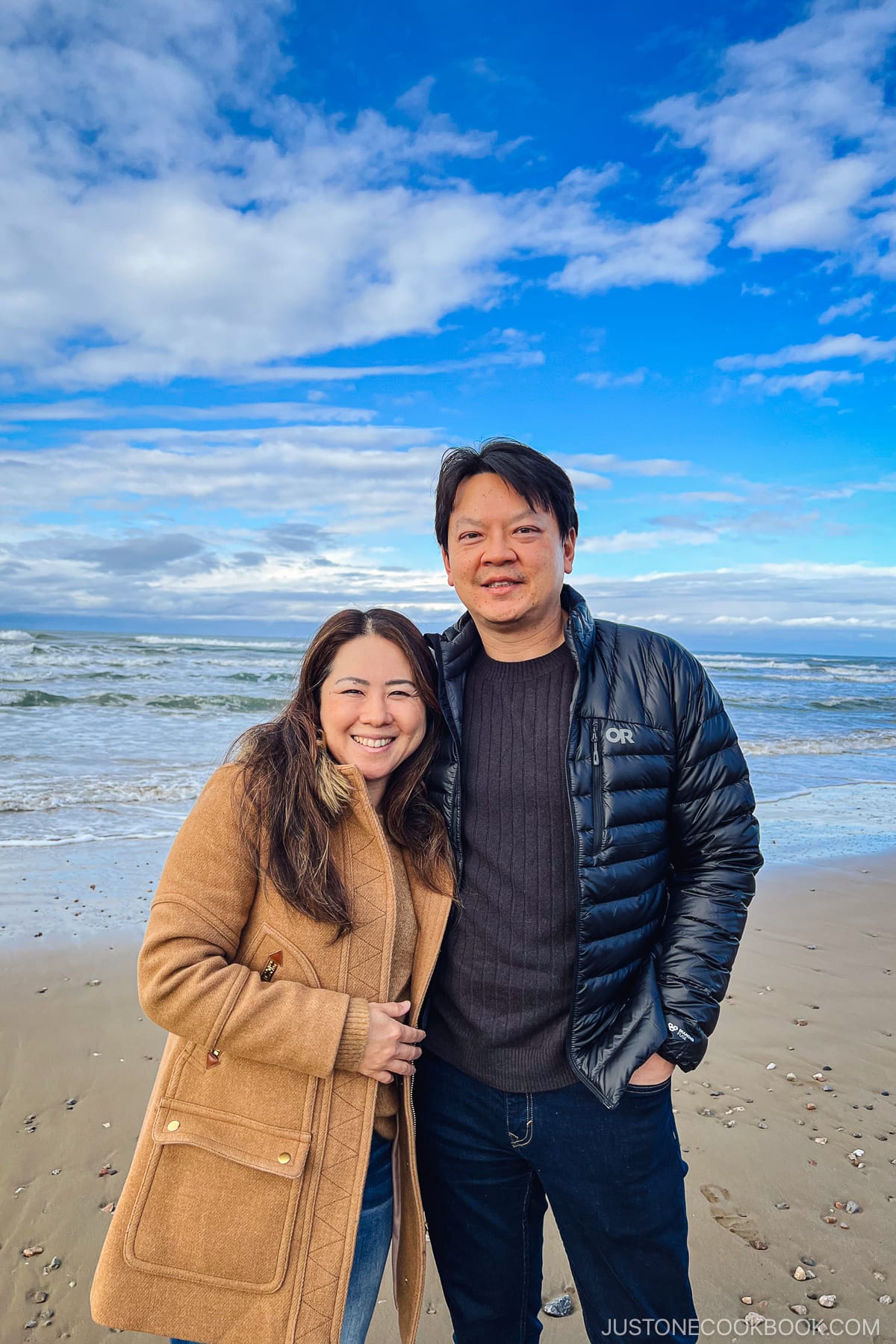
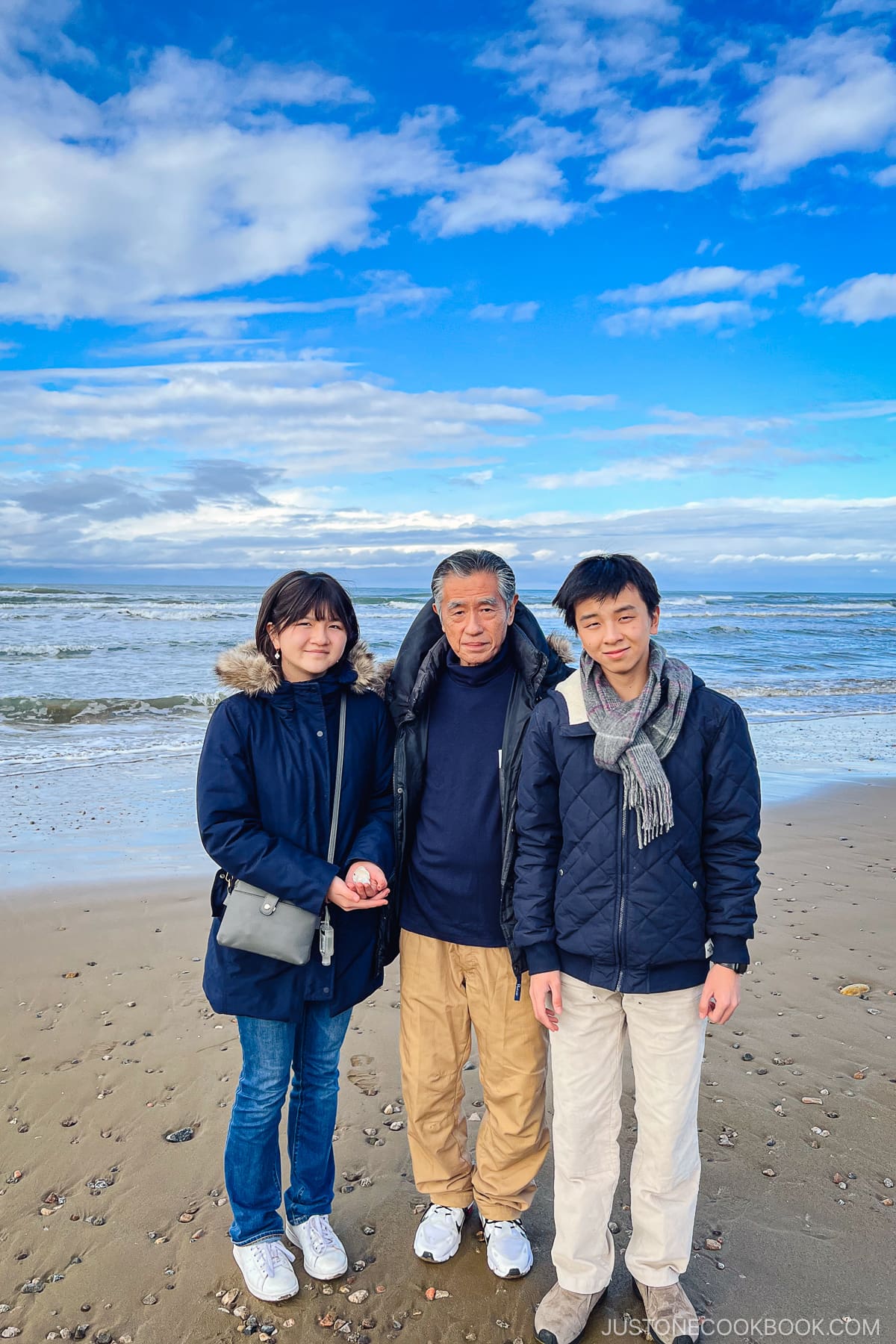
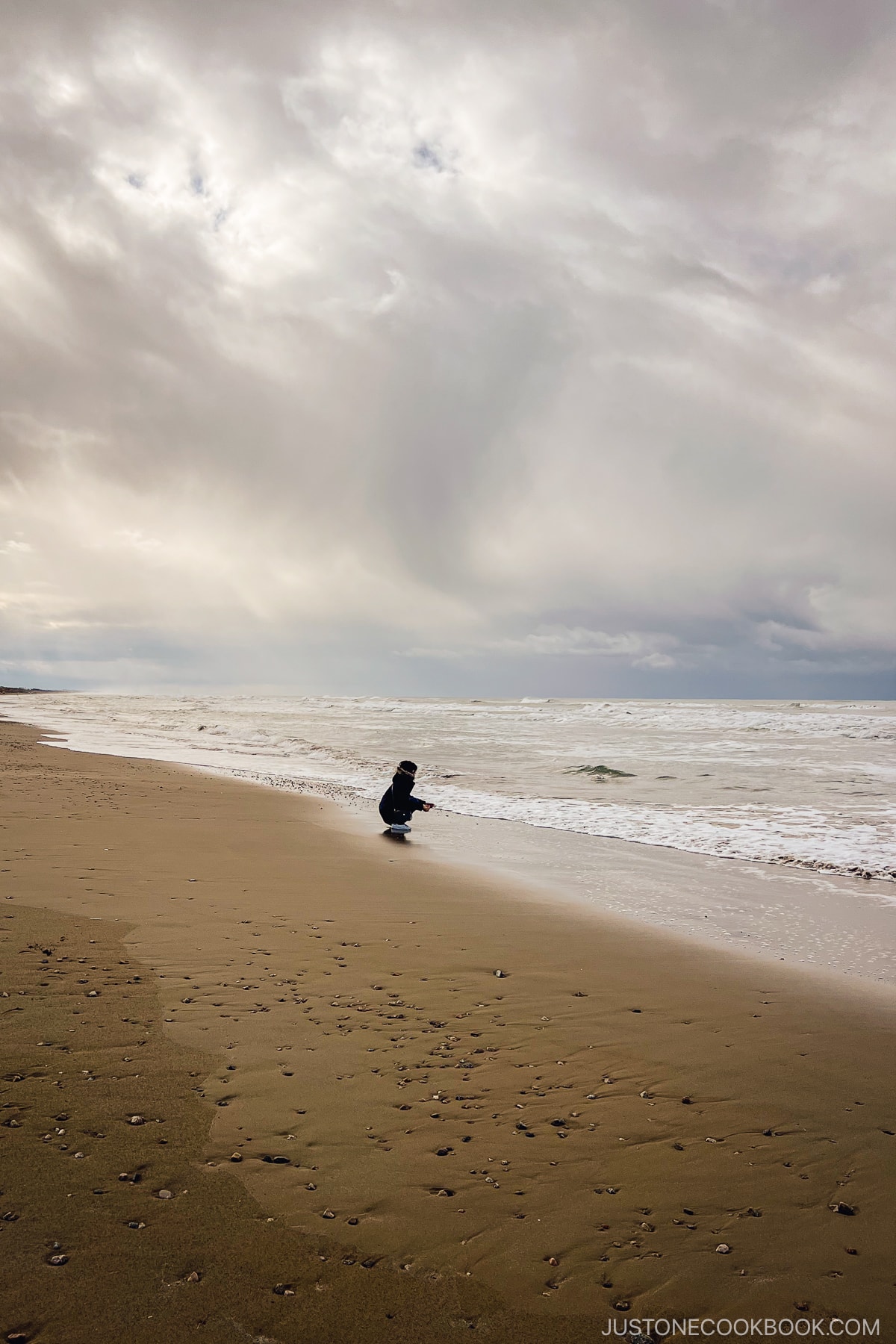
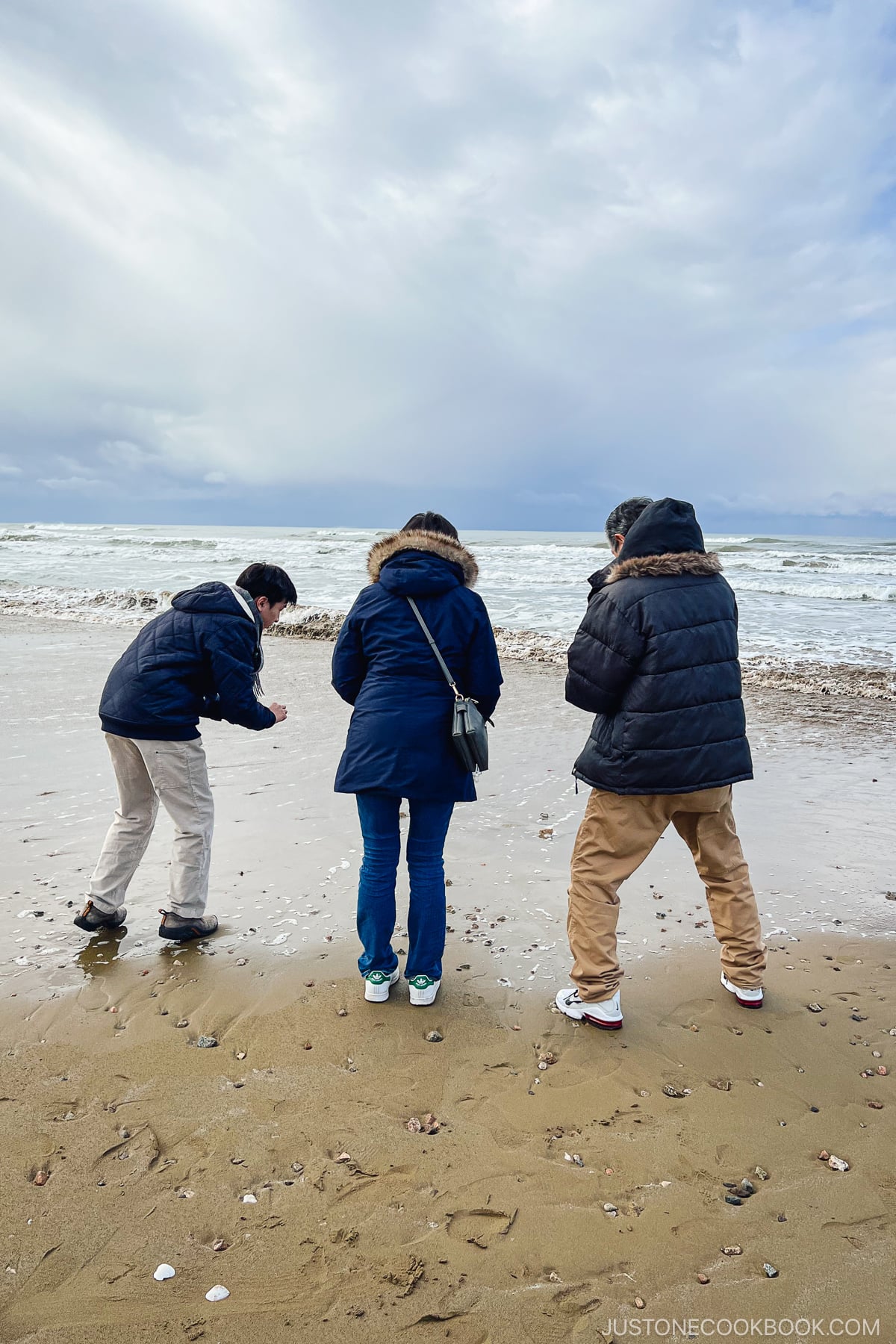
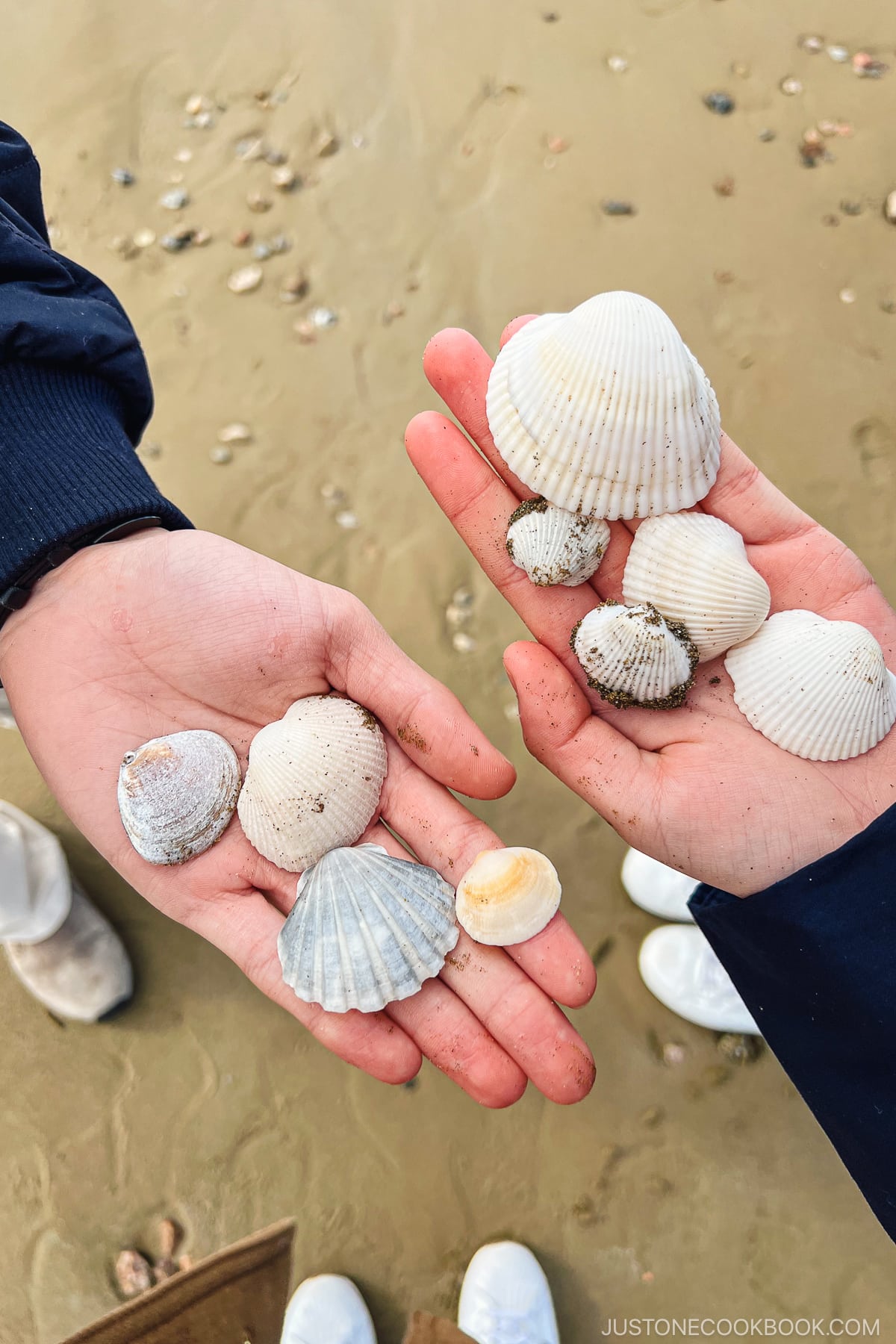
Keta Grand Shrine 氣多大社
Our second stop is the Keta Grand Shrine. Situated near a forest, the historical shrine has been there for at least 1,250 years. It’s one of the largest shrines in the Noto Peninsula. There are several shrine structures from 1,500 – 1,700’s that are designated Important Cultural Properties.
After praying at the main hall, we walked along the wooded path to the right and found another two smaller shrines. One of them was the Shrine of Knowledge and we had our children pray for a good school year ahead.
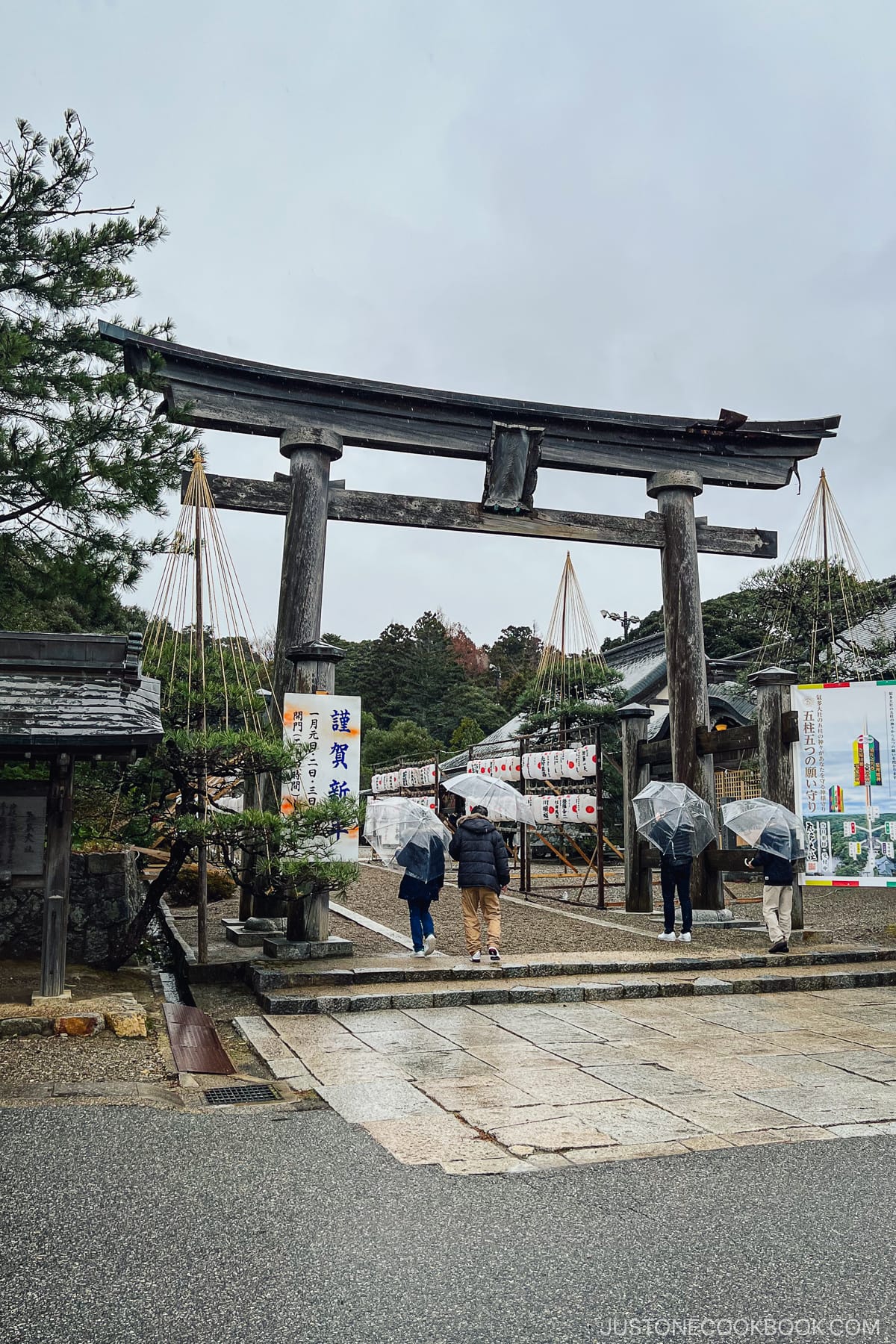
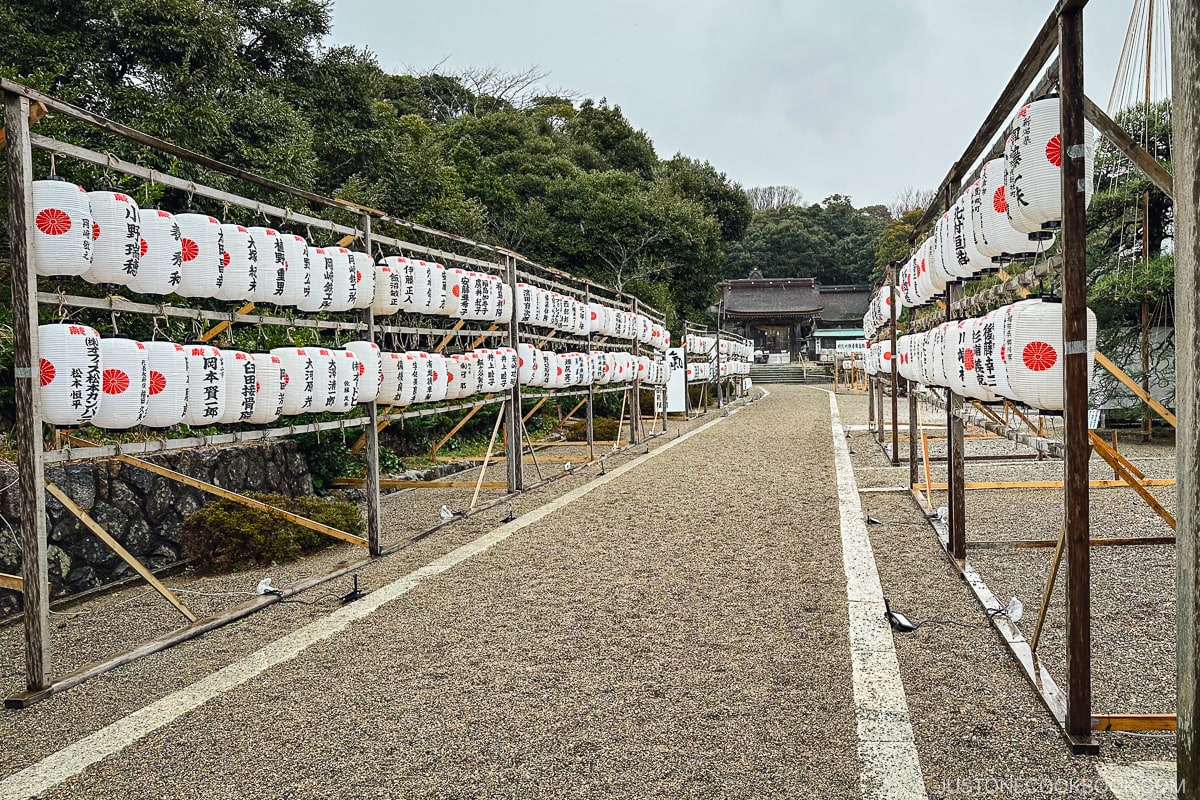
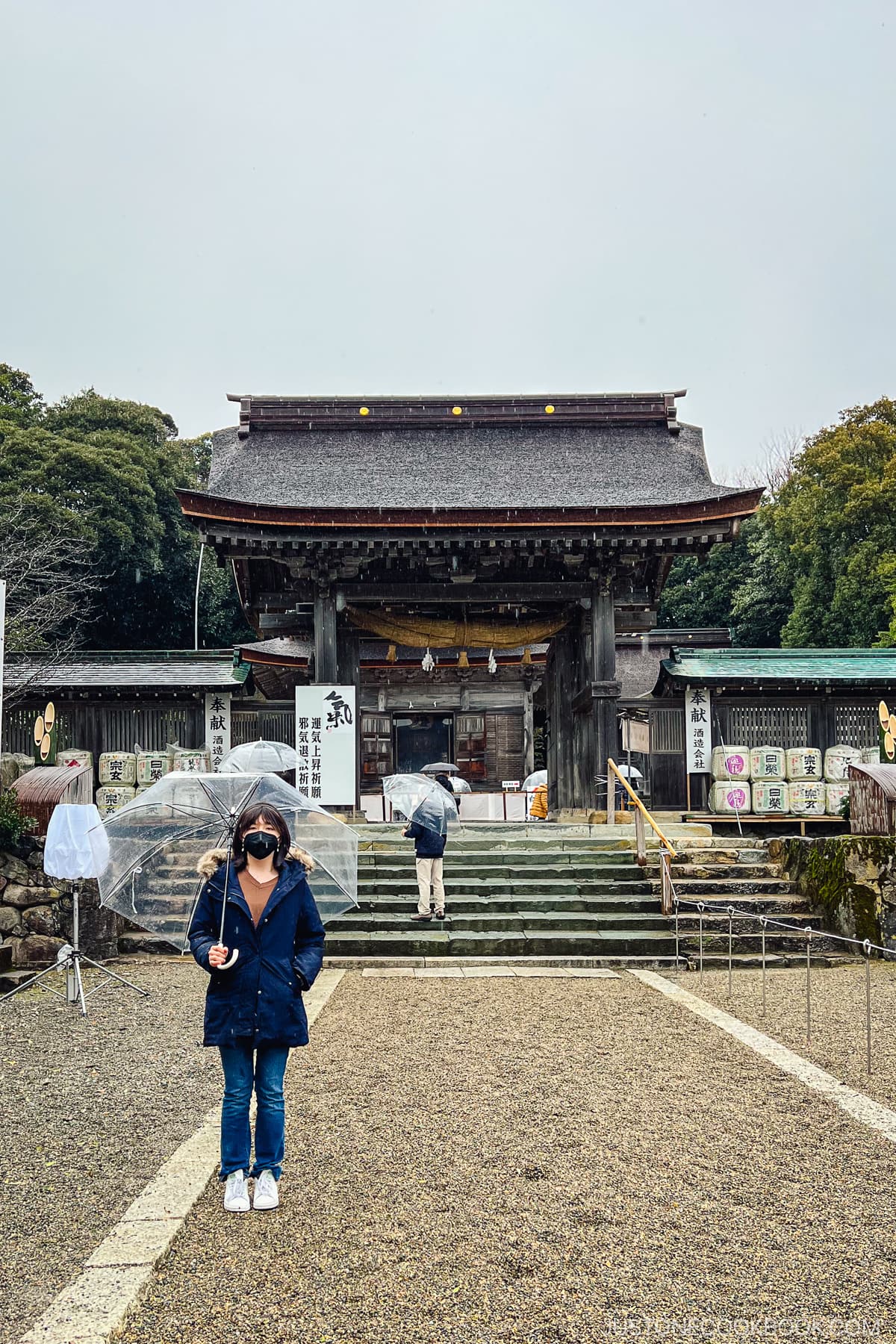
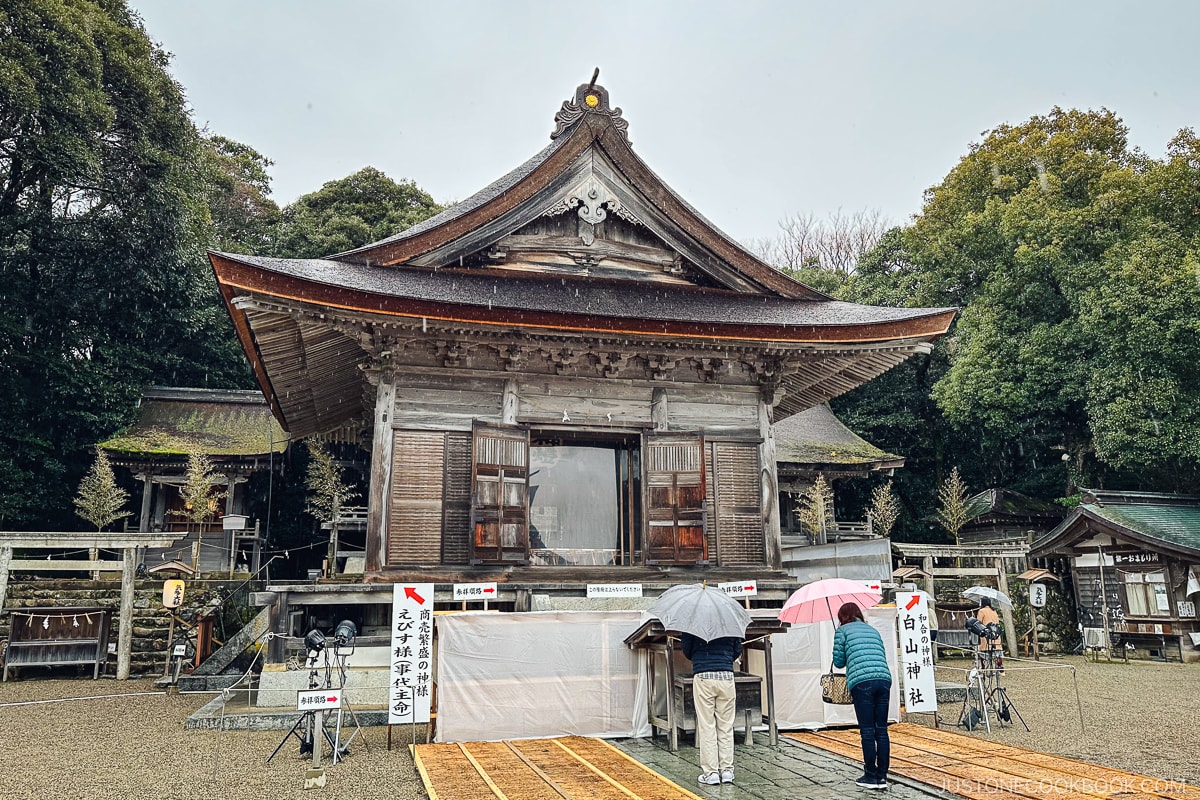
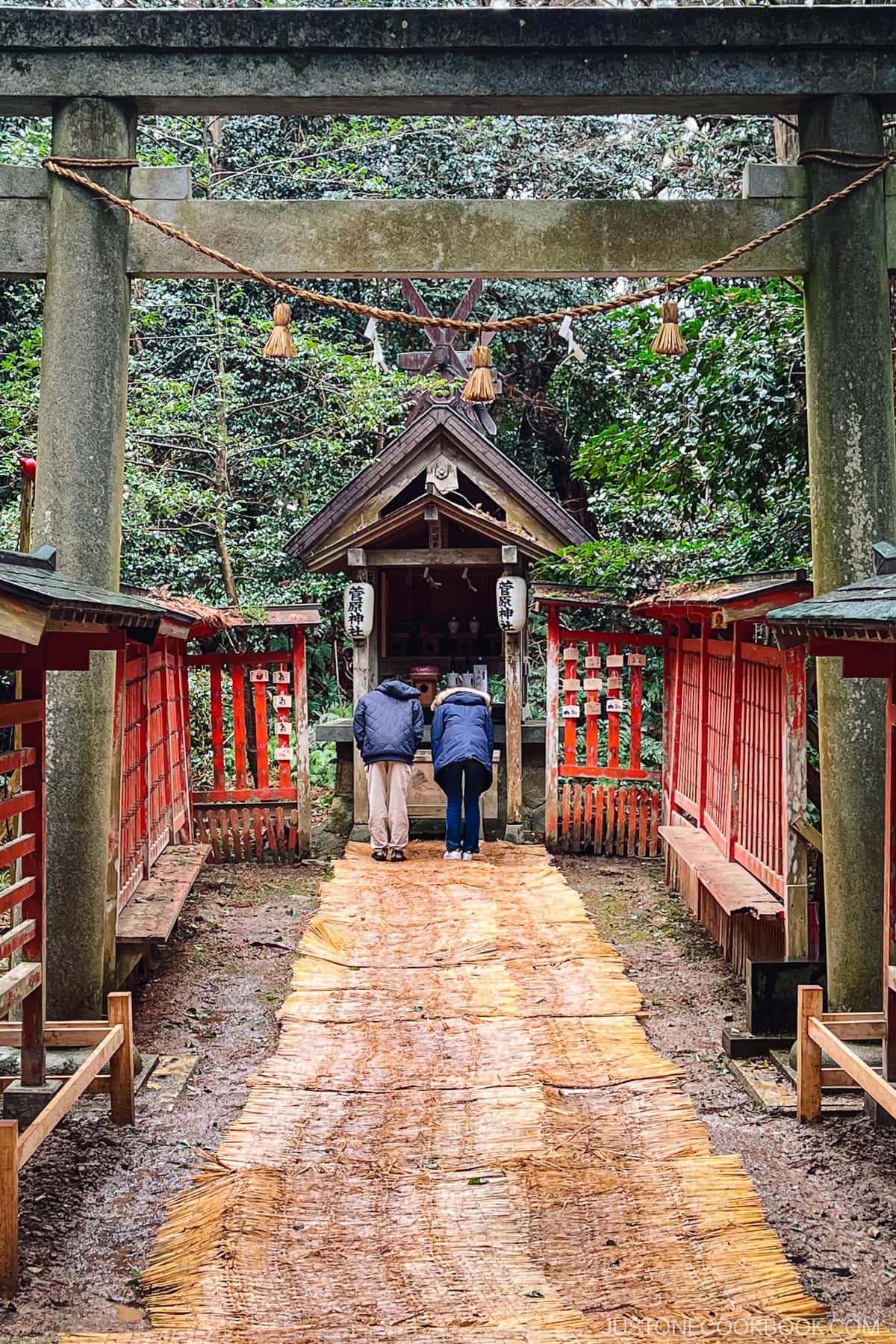
Yahata Sushiben (八幡すしべん)
For lunch, we made a quick stop at Yahata Sushiben nearby. It’s a classic Japanese diner with many shops in the Noto and Kanazawa area. Serving a variety of udon, soba, donburi, ramen, and curry, you’ll for sure find your favorite Japanese dishes on their menu. With the cold weather, we opted for warm udon.
The udon soup was unbelievably delicious, the dashi had so much flavor compared to other udon shops we’ve tried. They even sell ready-made dashi to go for those who want to bring them home.
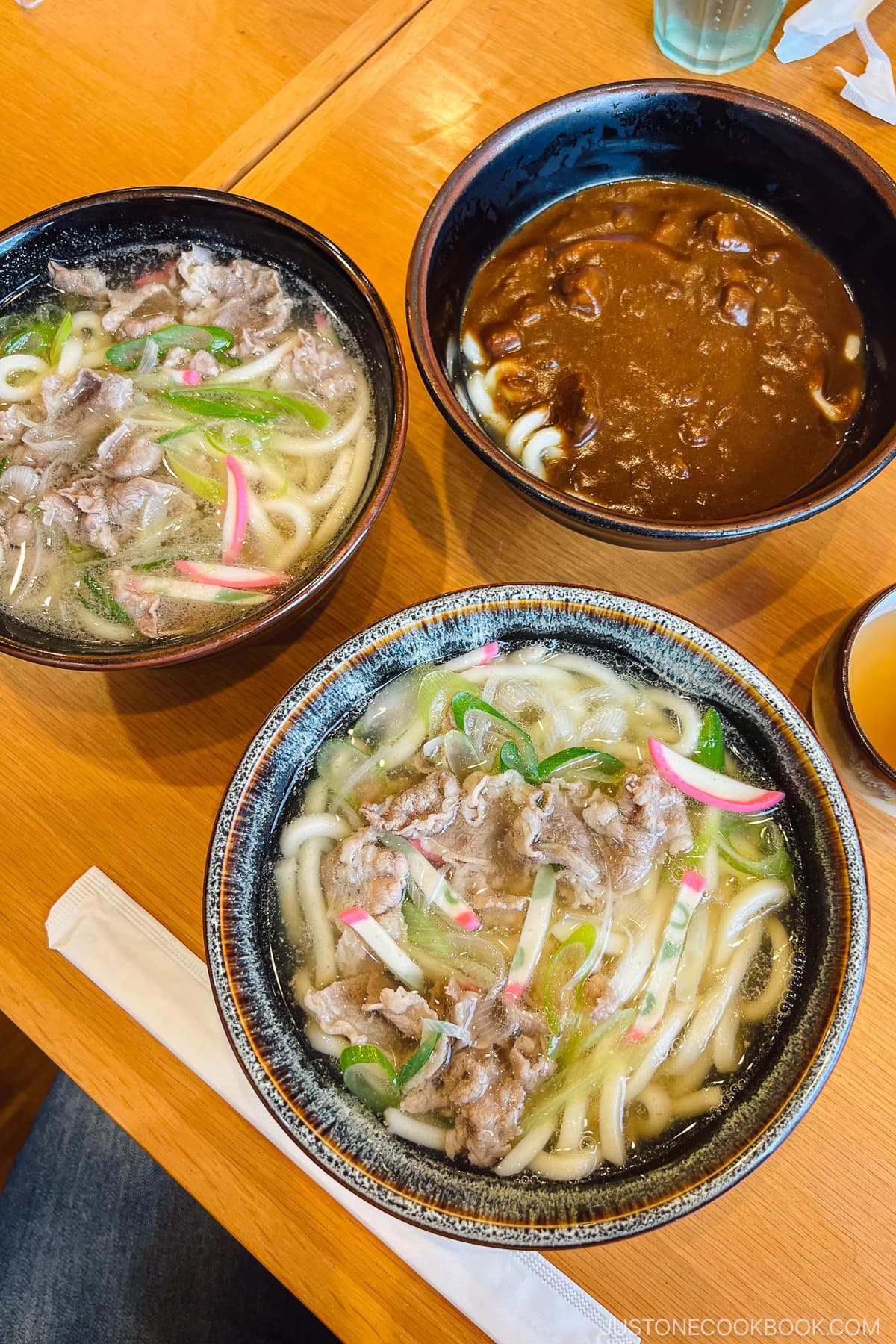
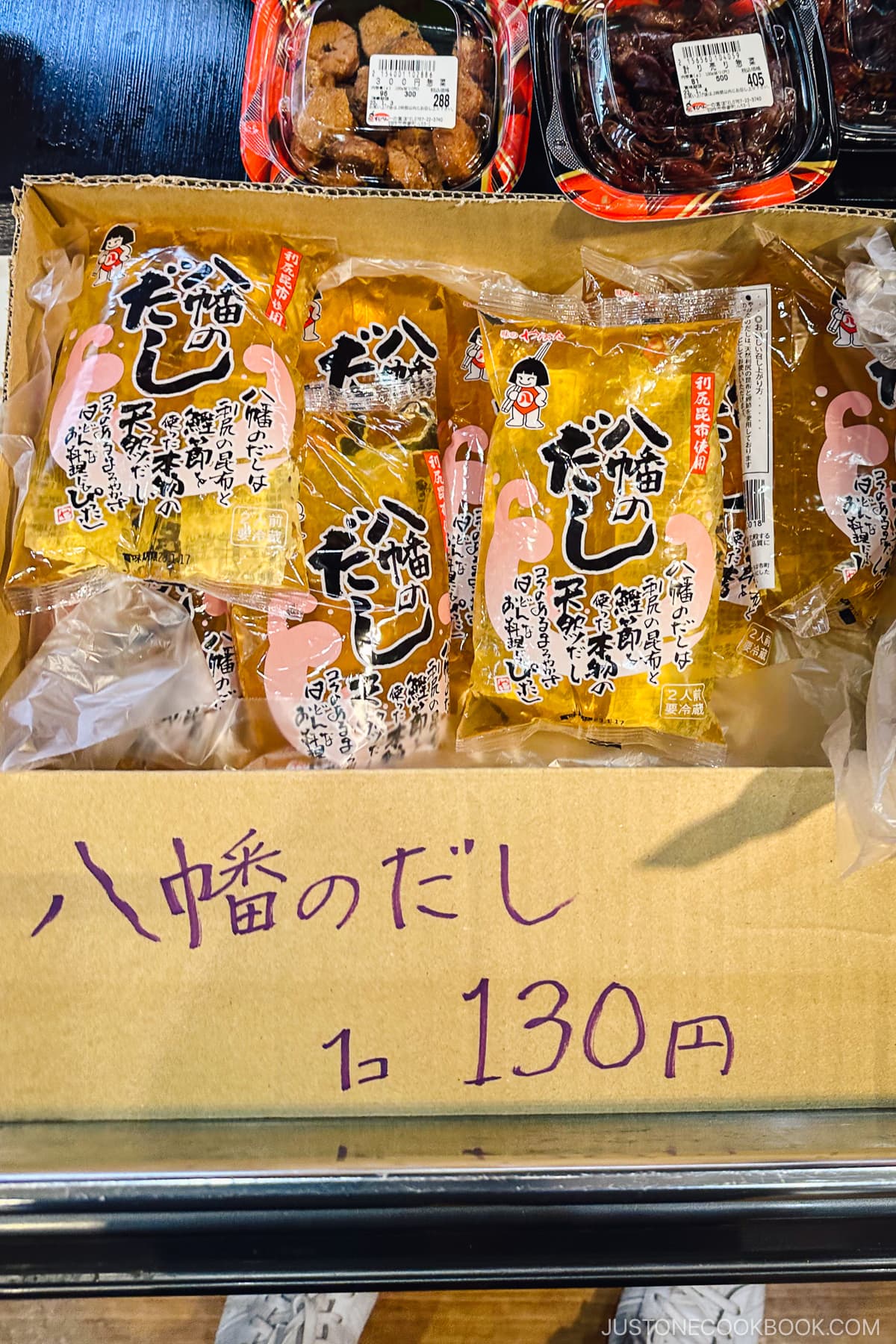
Noto Kongō 能登金剛 – Ganmon 巌門
The next stop along the way to Wajima City (where our ryokan was located) is Noto Kongō. Noto Kongō is known for several interesting rock formations, including the famous Ganmon. Ganmon is the name of a giant boulder in the Sea of Japan with a naturally formed cave from the rough waves. It is located within a park on the coast.
Inside the park, there’s a bridge that allows spectacular views of the sea and a few other spots with interesting rock formations. Boat cruises to see the Ganmon rocks are available at the park (seasonal).
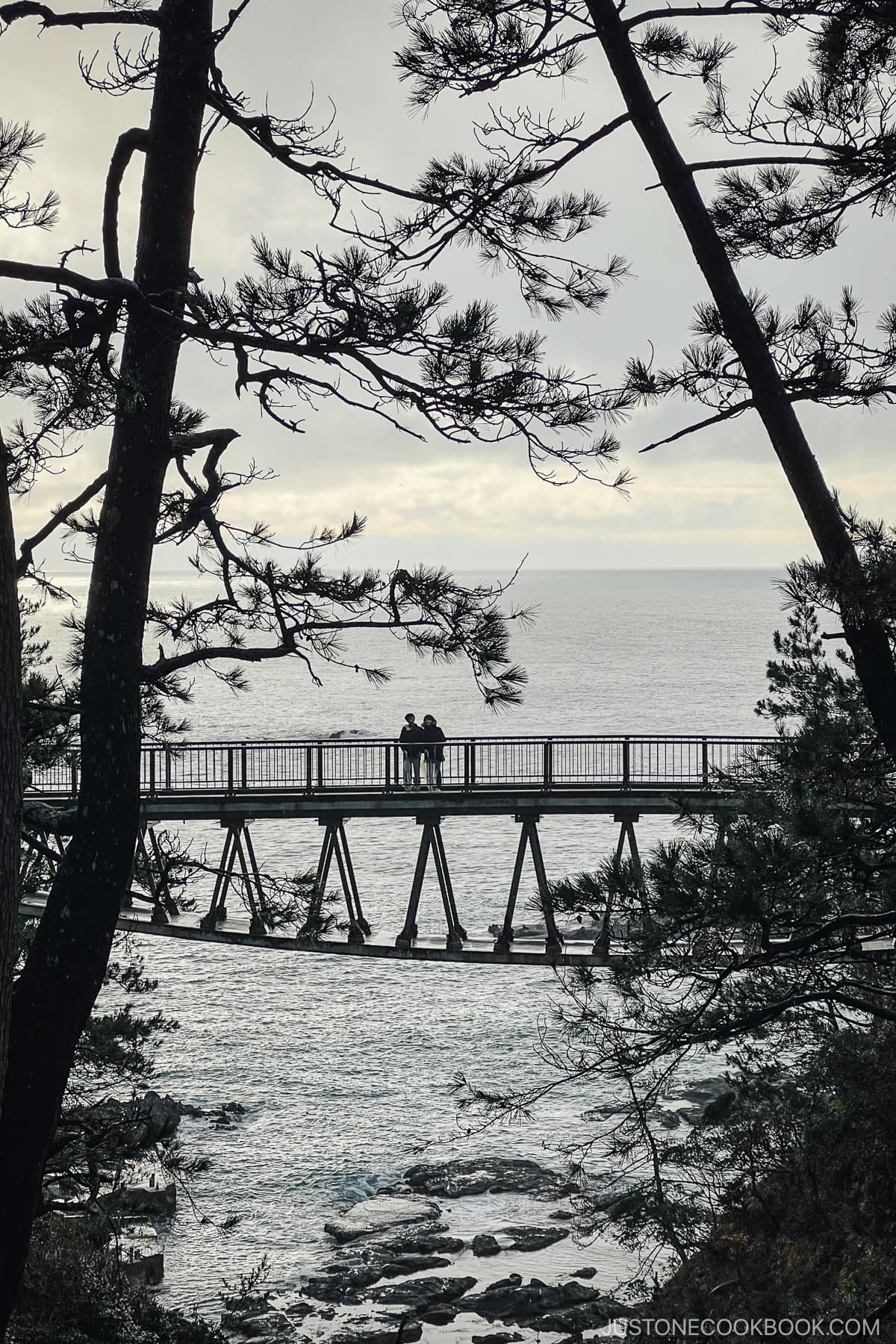
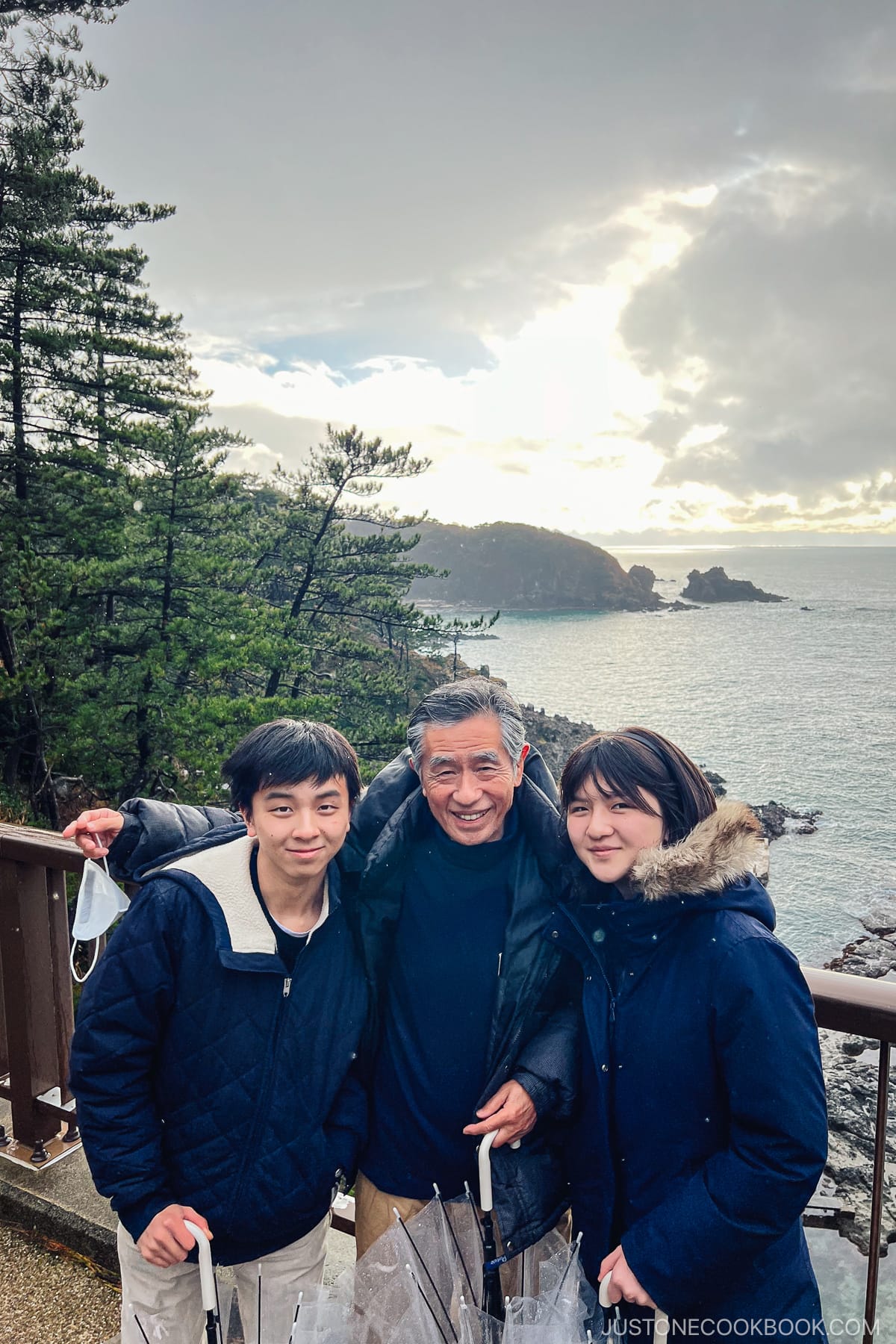
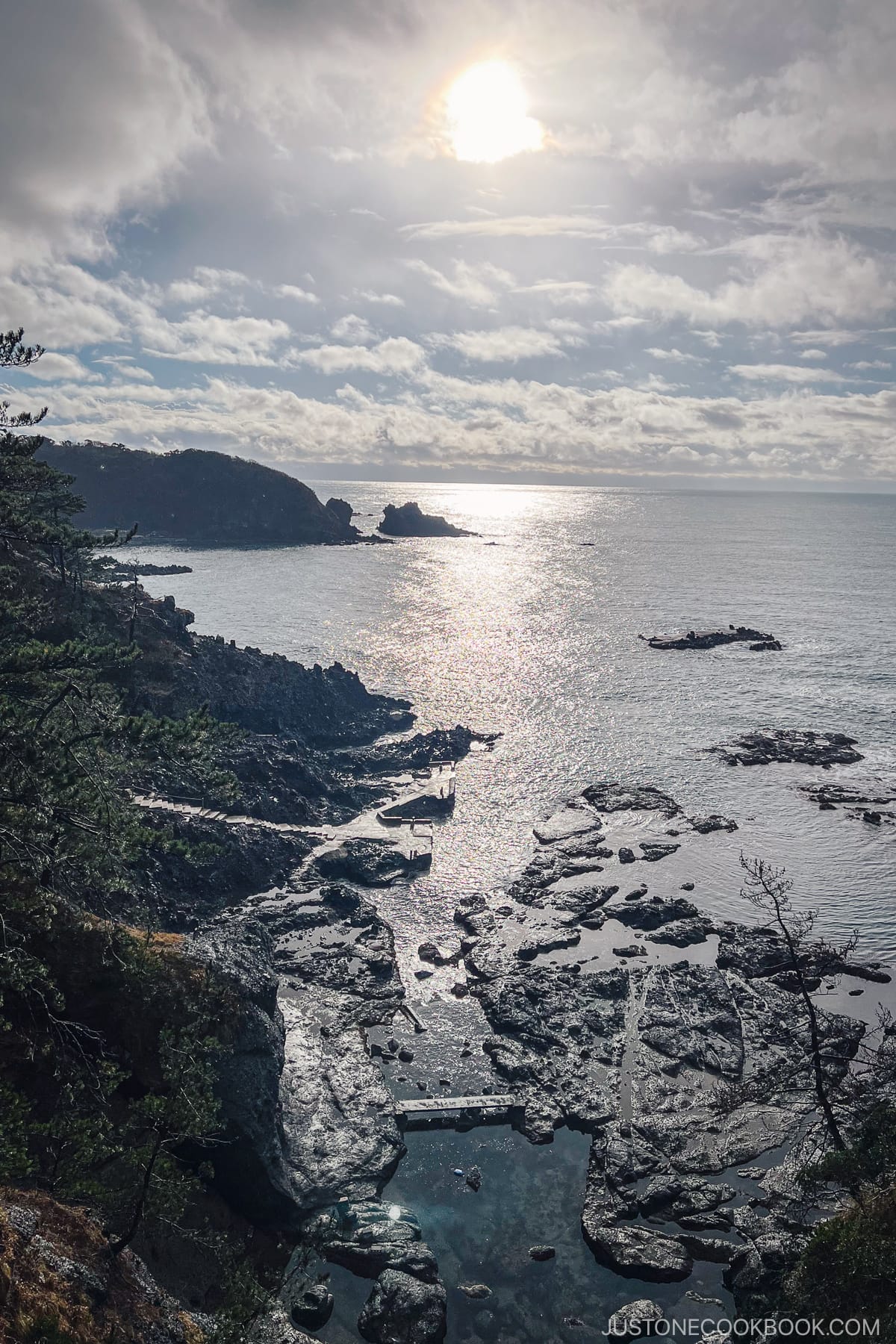
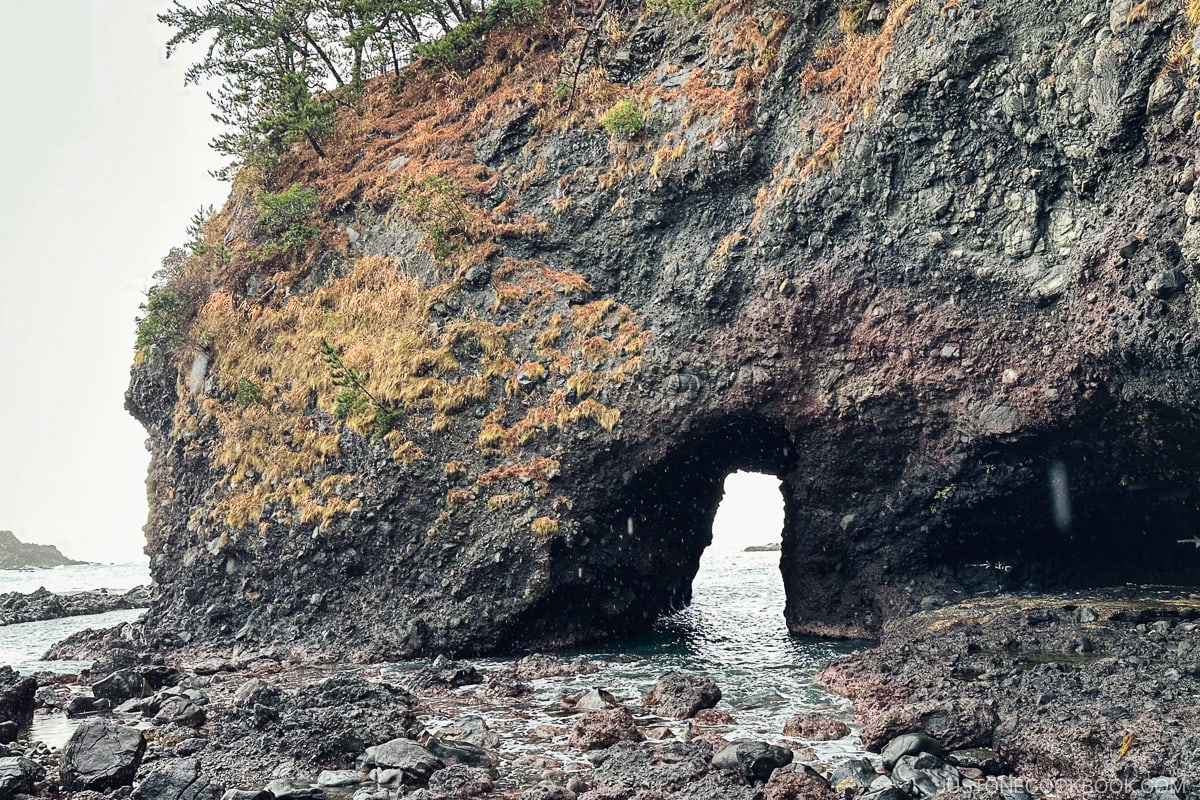
Hatago-iwa Rock 機具岩 and Couple Rock 夫婦岩
As we continued our road trip north, there were a few more interesting rock formations including the sacred Hatago-iwa rock. The two rocks—one large and one smaller—are connected by shimenawa, the ritual purification rope for the Shinto religion. There’s a small shrine on top of the larger rock. The local legend has it that the deity in charge of textile was attached and threw his loom into the ocean and became the rocks.
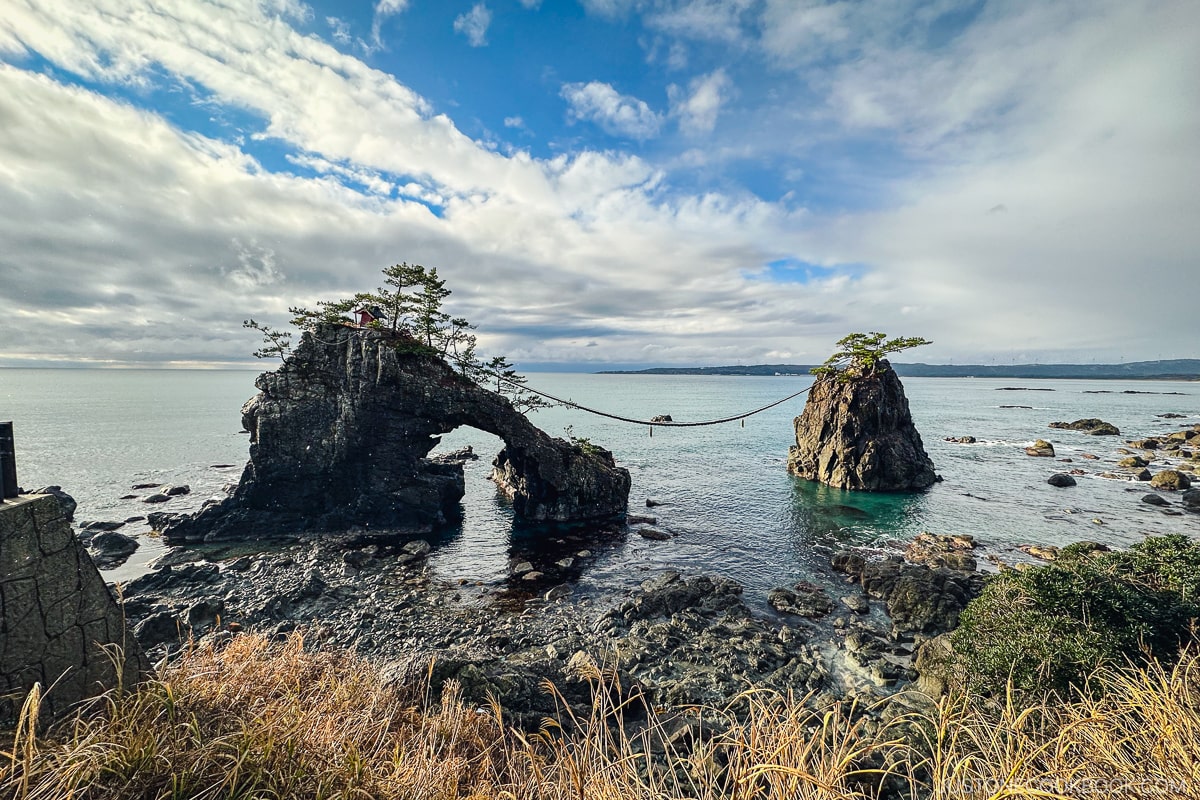
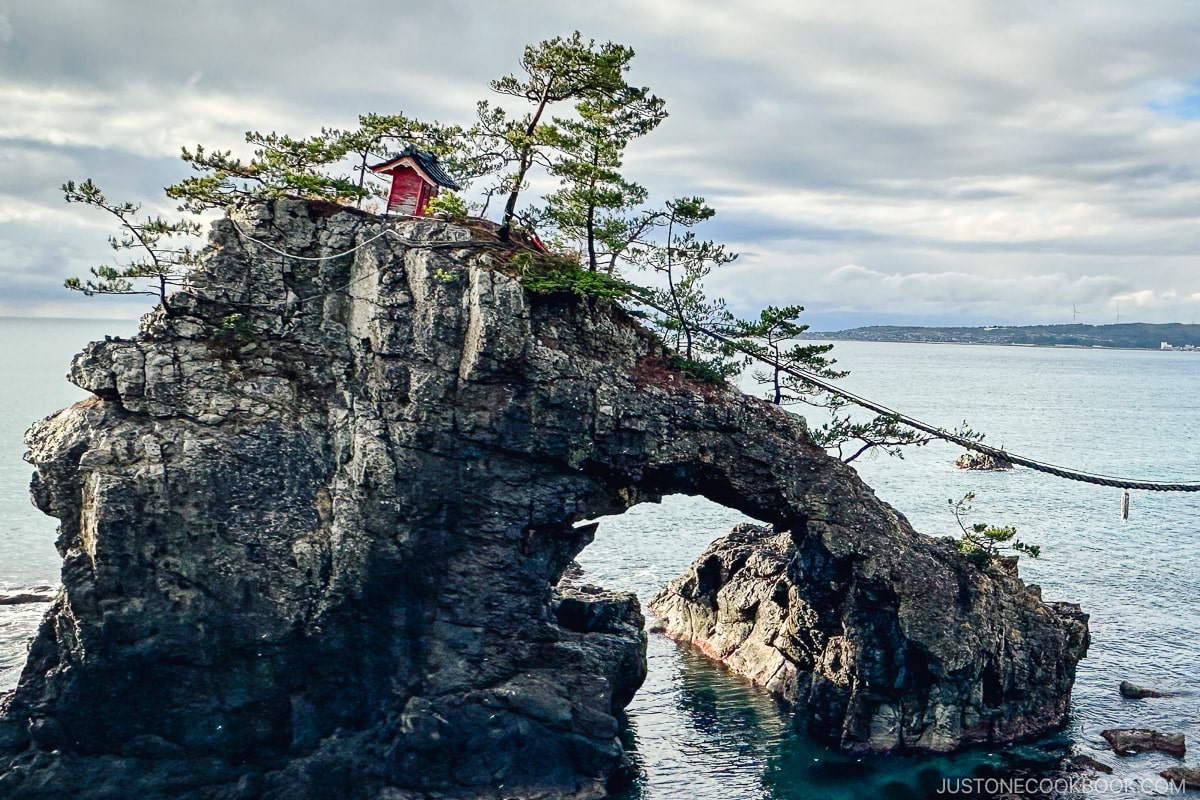
Another set of rocks considered to be spiritually powerful by the locals is the “couples rock”. The rock formation is similar to Hatago-iwam, with the rock on the left considered the female and the right male.
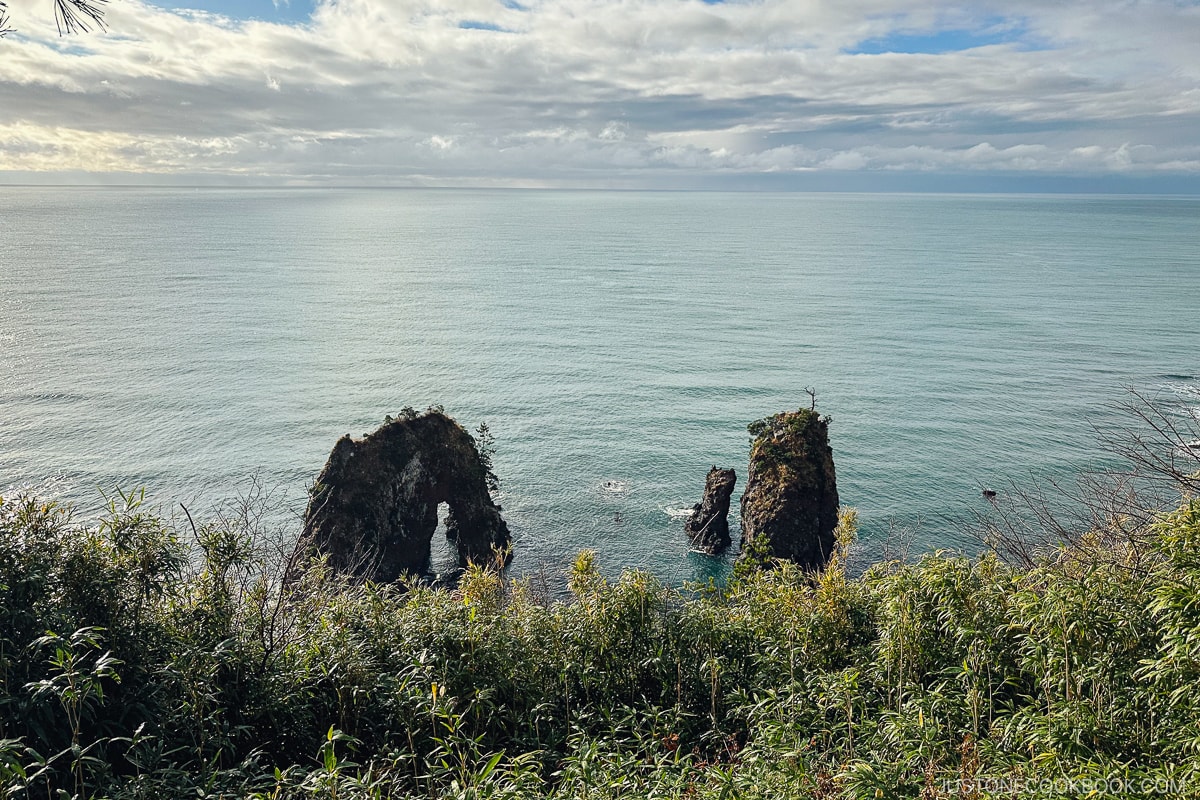
Sōjiji Soin Temple 總持寺祖院
The last stop we would recommend for day one is Sōjiji Soin Temple. The grand temple was founded in 1321, and a year later the Japanese Emperor Godaigo bestowed upon Sojiji the honor of “Chokuganjo”. Which means a temple built at the wishes of the Emperor.
At the height of its power, the temple had over 16,000 subordinate temples throughout Japan. However, the temple lost its hold as the sect leader in 1898 when a fire burnt down most buildings.
Many of the buildings have been rebuilt and restored to their previous glory. The details of the workmanship for both the exterior and interiors of the temple buildings are exquisite. Visitors are welcome to walk through most of the temple buildings.
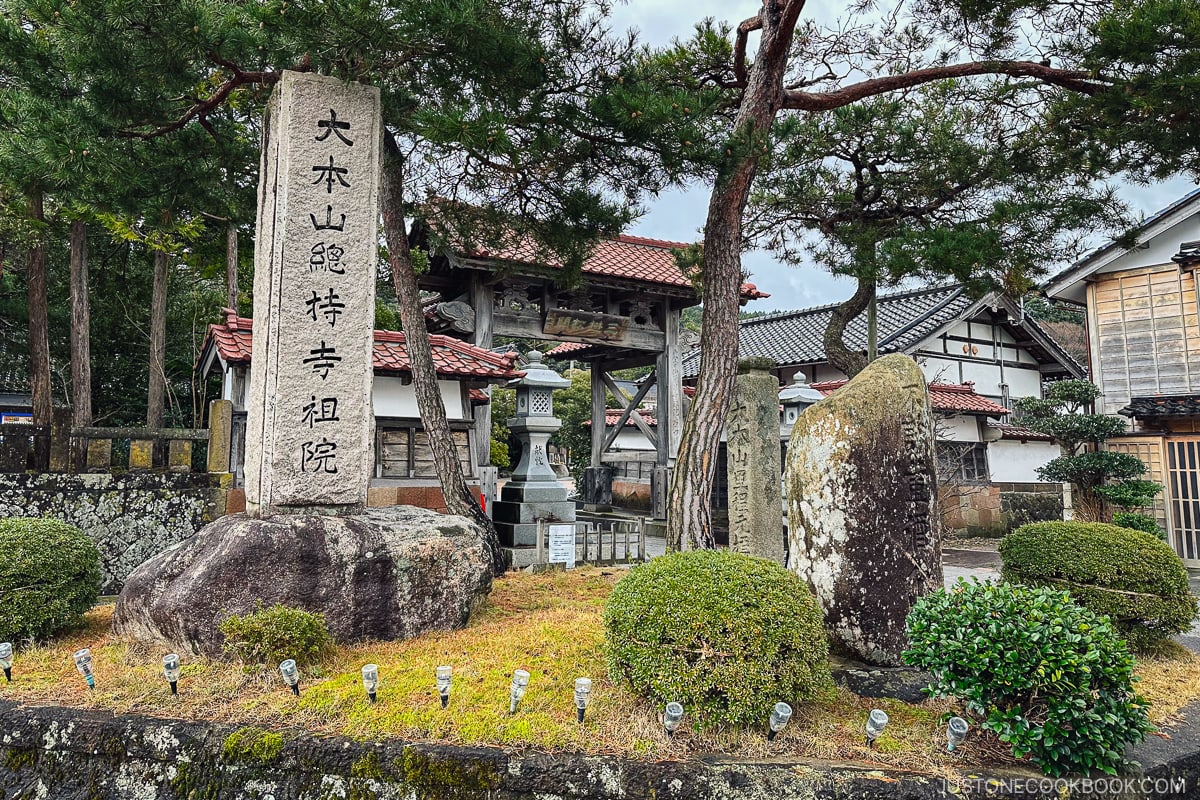
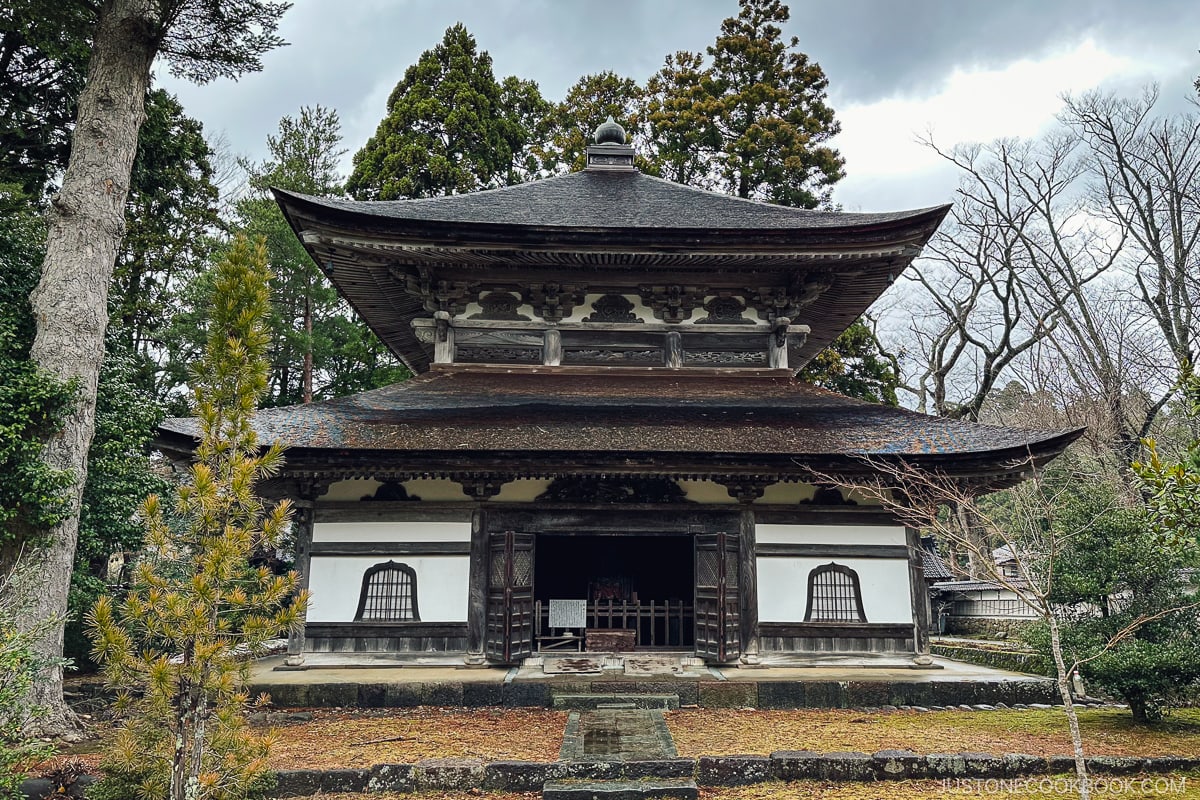
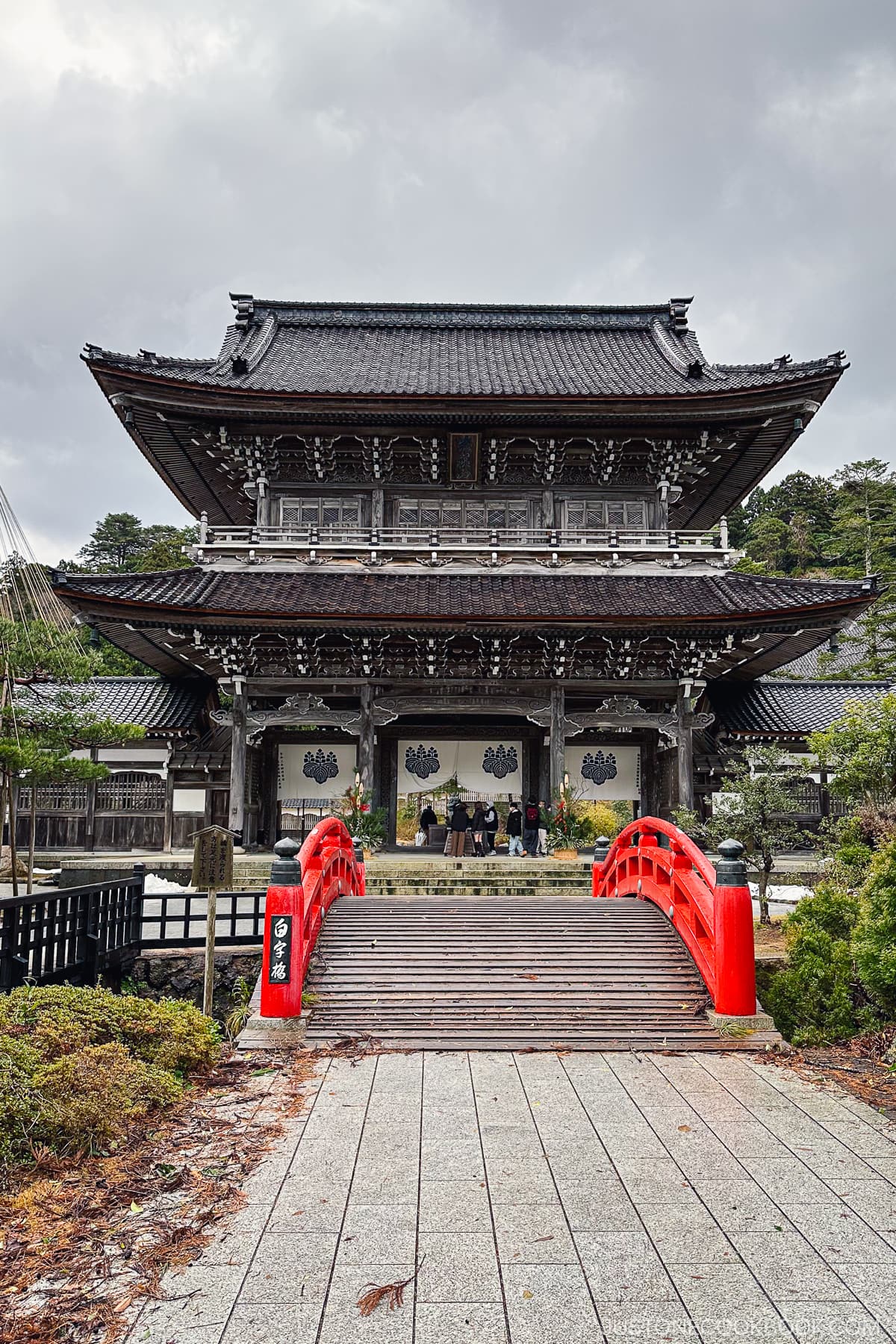
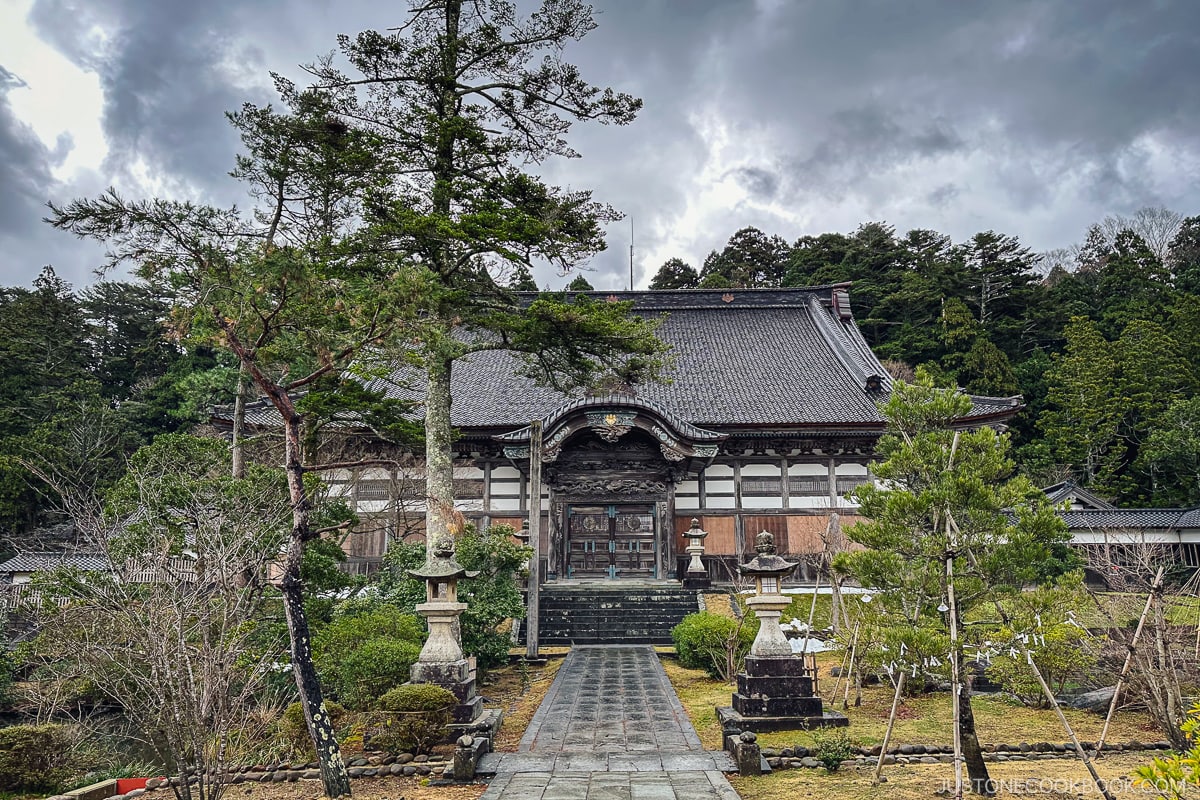
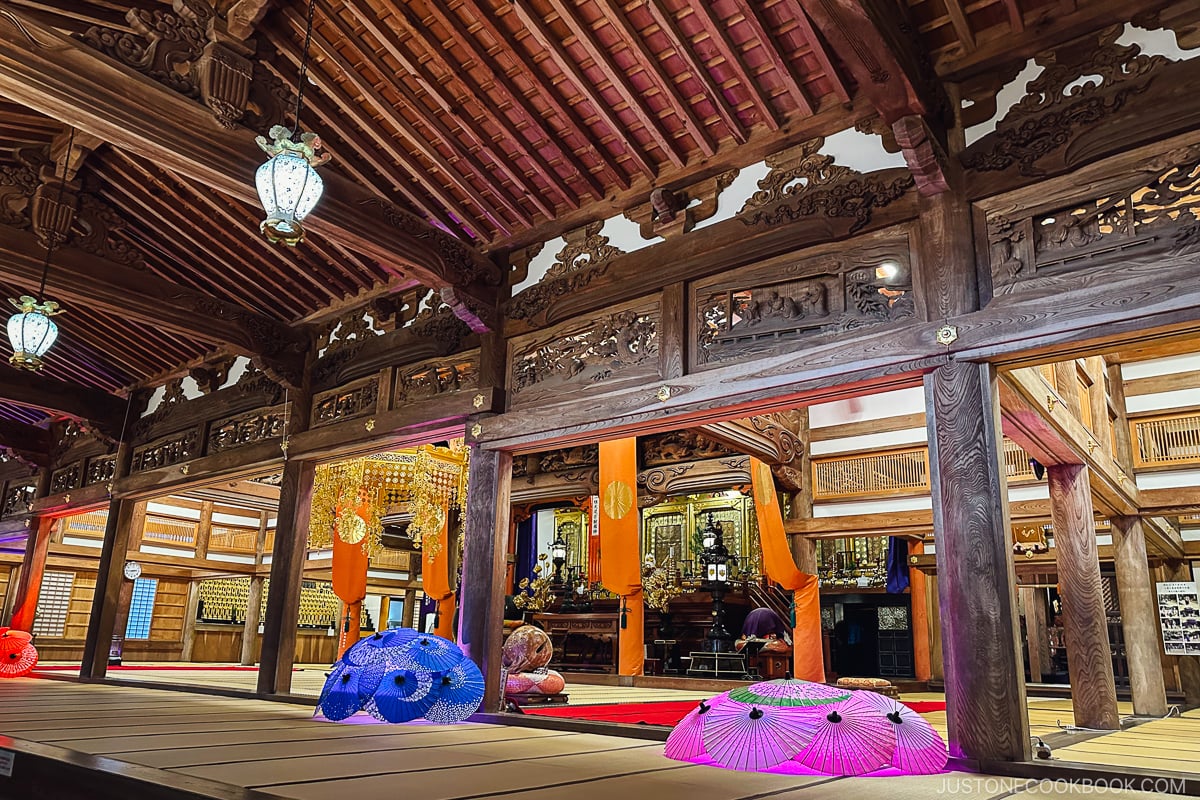
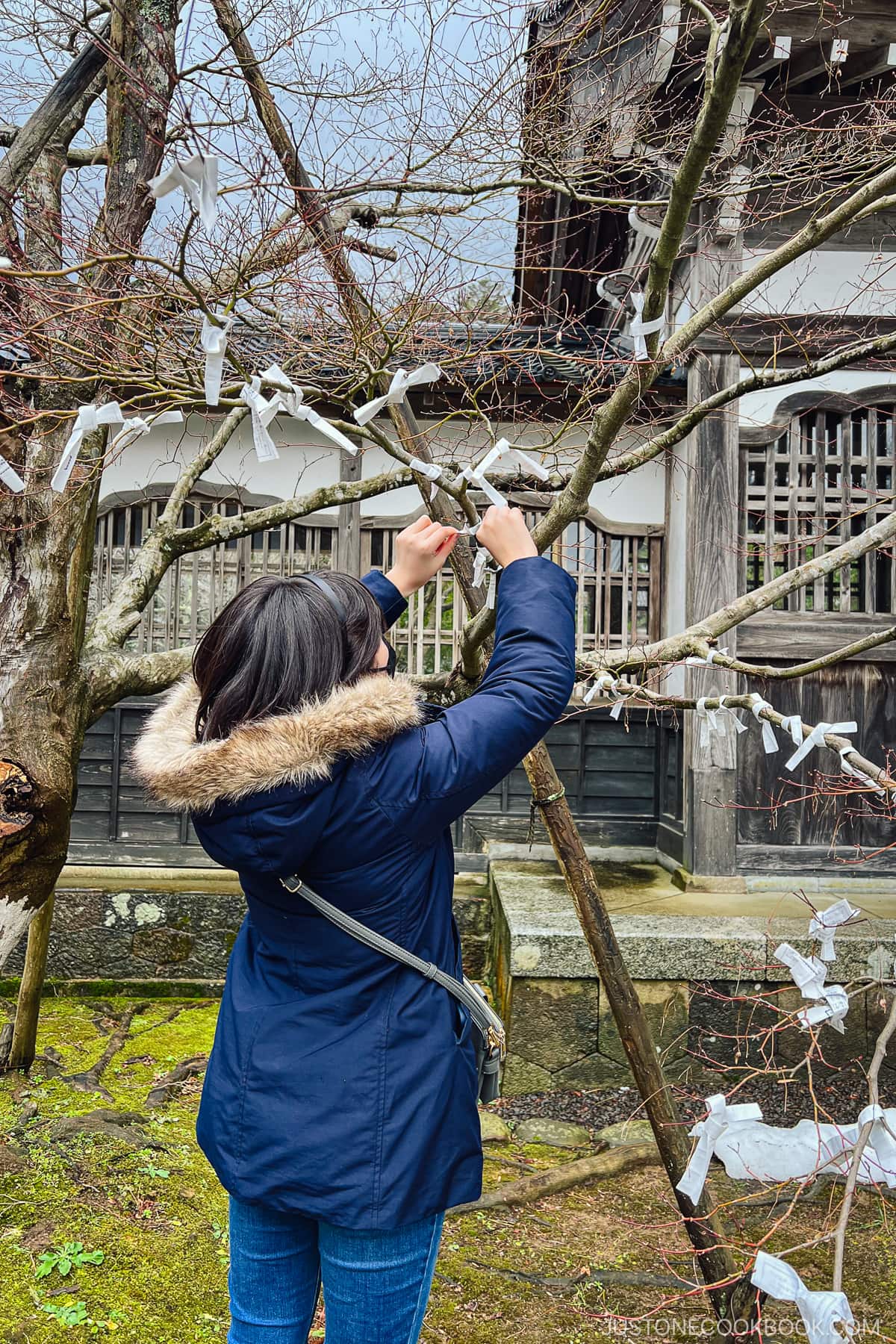
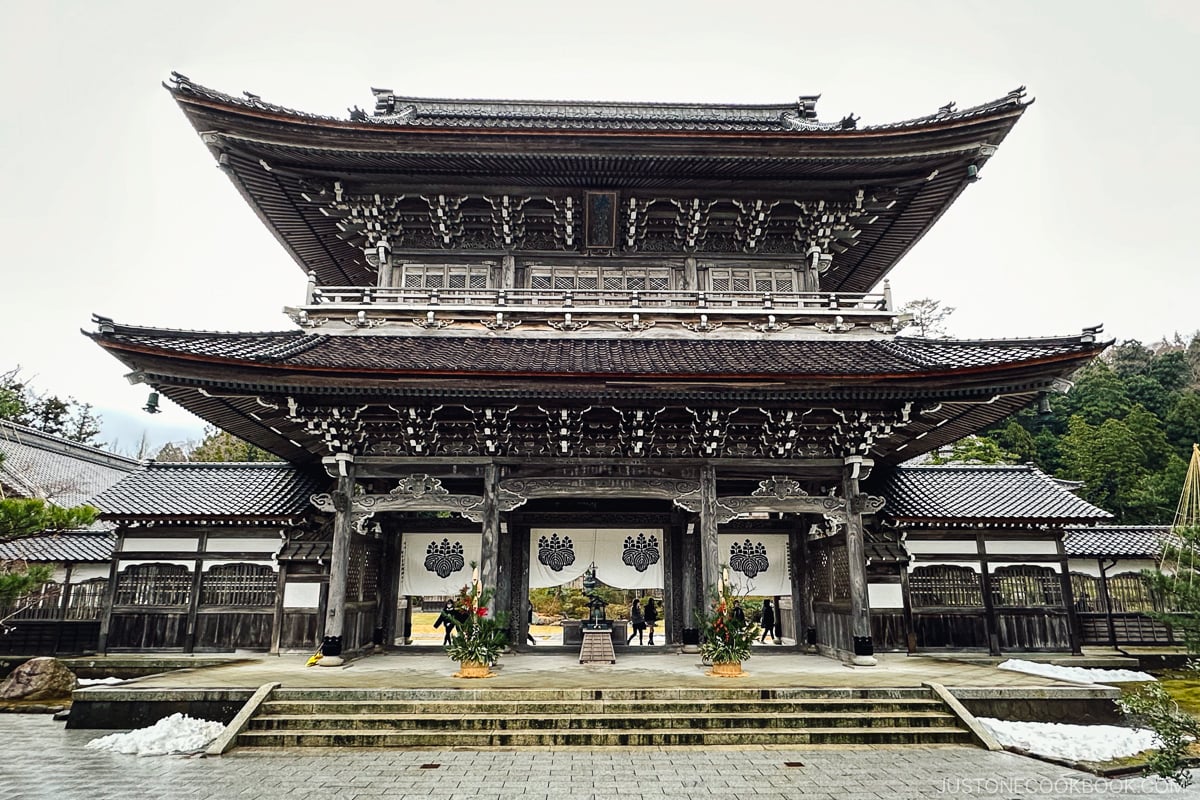
Wajima Kiriko Art Museum 輪島キリコ会館
For day 2 in Noto Peninsula, we spent most of the time around Wajima City to learn about its cultural history and the most well-known local craft, urushi art (lacquer).
We started the day in the Kiriko Art Museum without prior knowledge of “kiriko” and what it means. We were so delighted and surprised to find out it’s a museum and storage facility for Noto Peninsula’s festival lanterns. The word kiriko means sacred lantern. Starting in the late 1600s, residents used these lanterns in their celebration and to ward off evil.
The kiriko lanterns are enormous with the tallest one at over 40 feet. They are used in festivals all over Noto Peninsula during the summer festival season. What makes these festivals interesting is they are celebrated with varying flair and styles. Some areas set the floats on fire while others carry them in the sea.
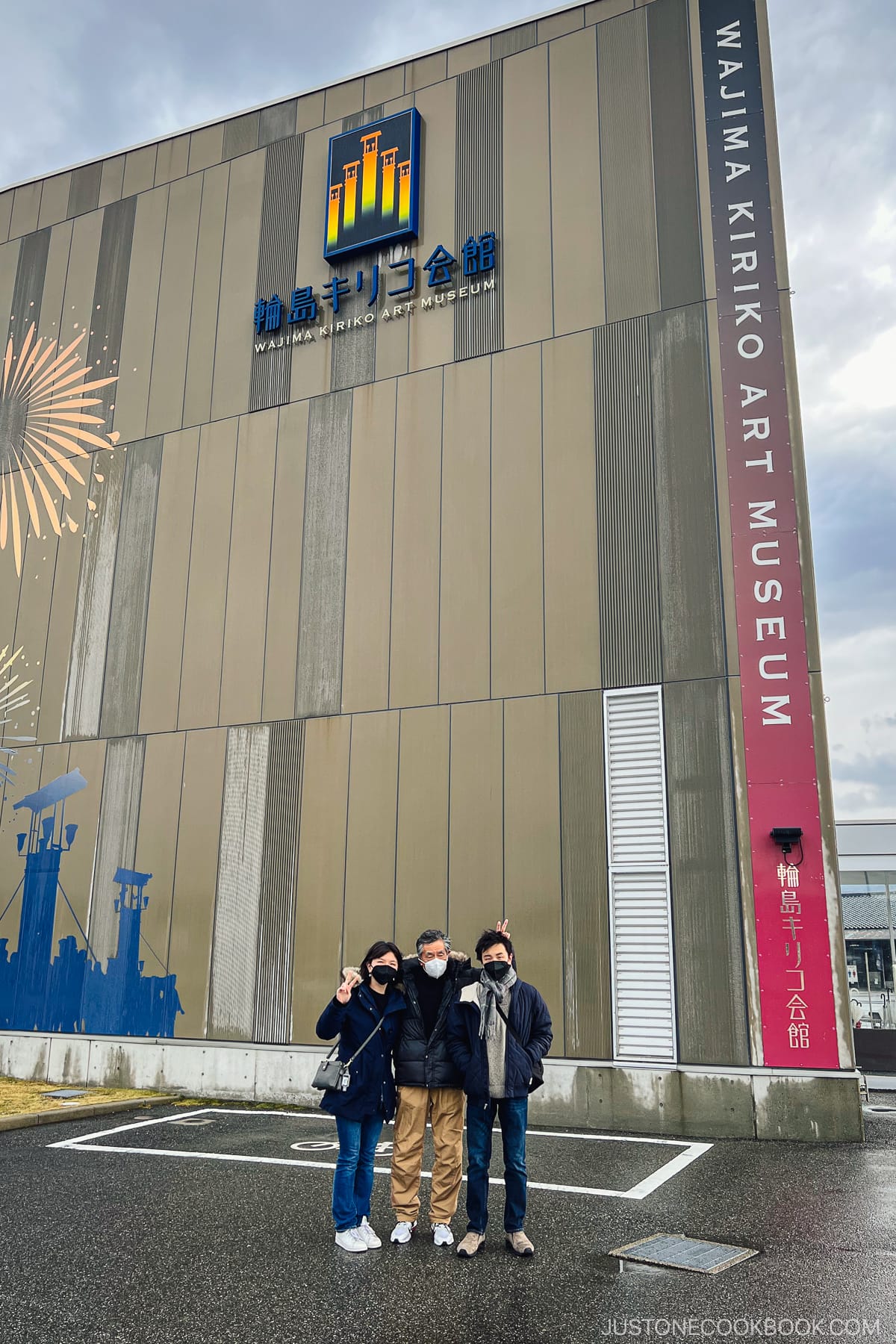
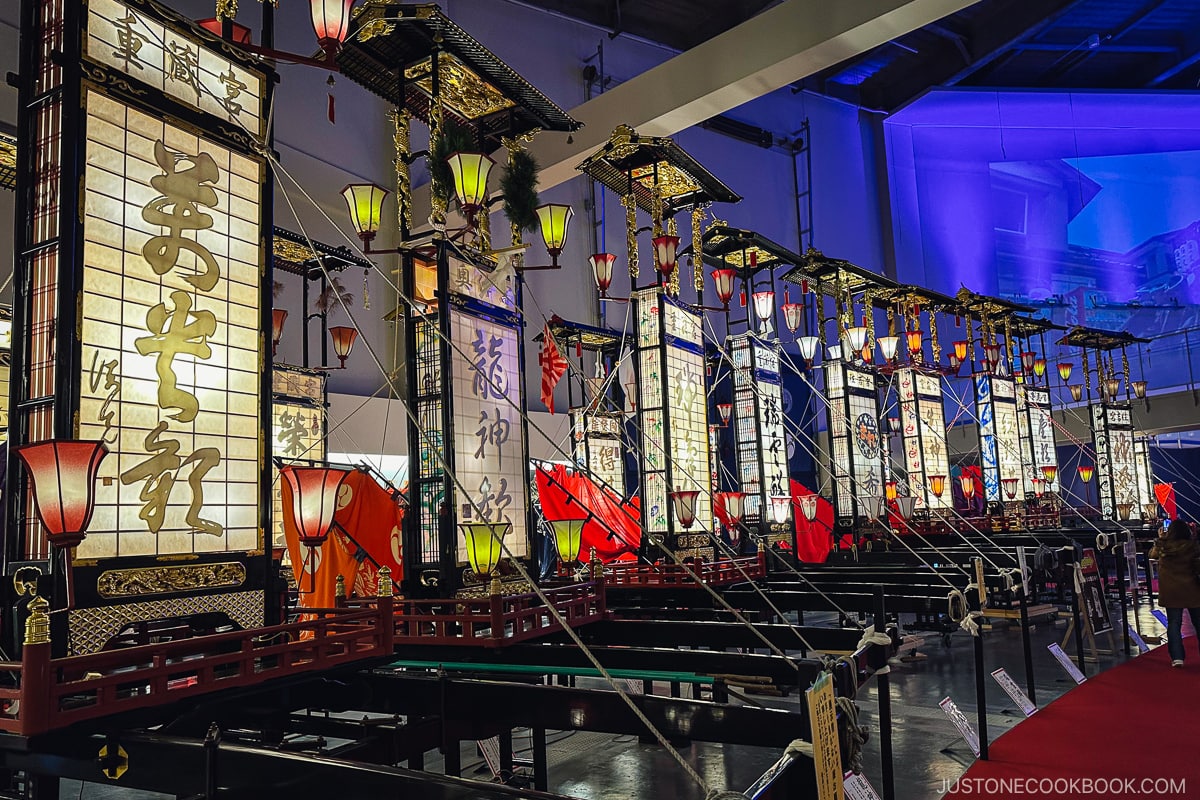
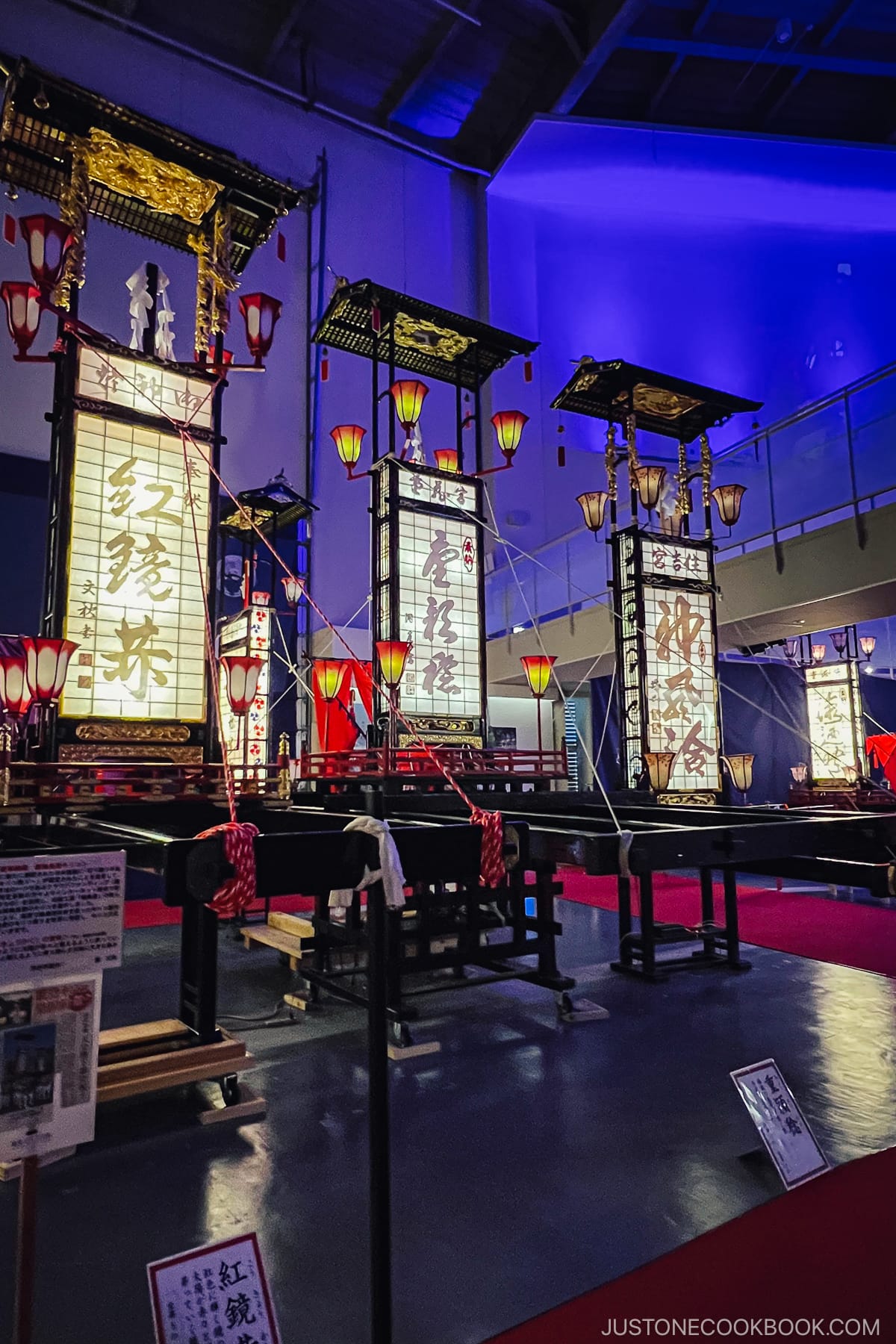
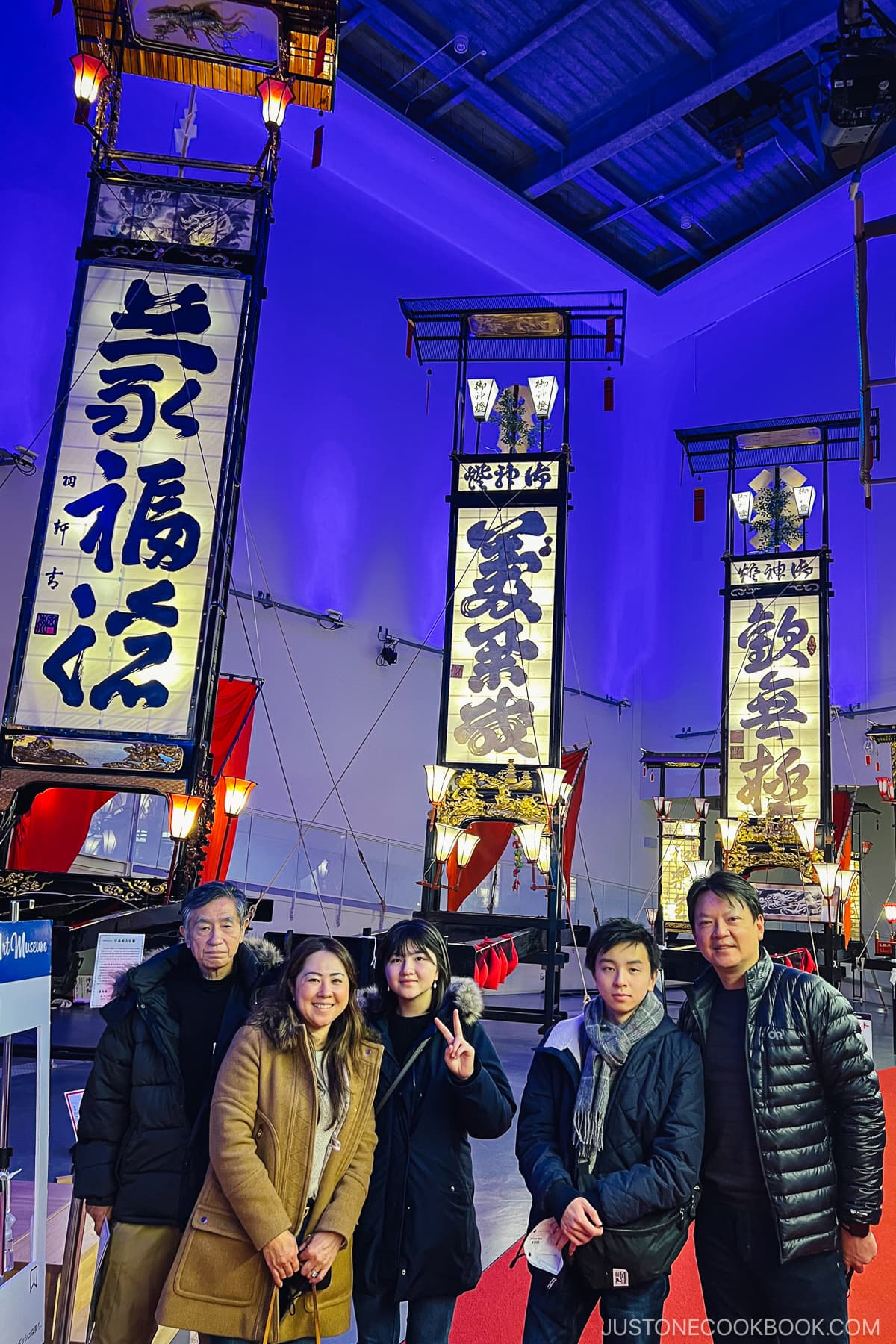
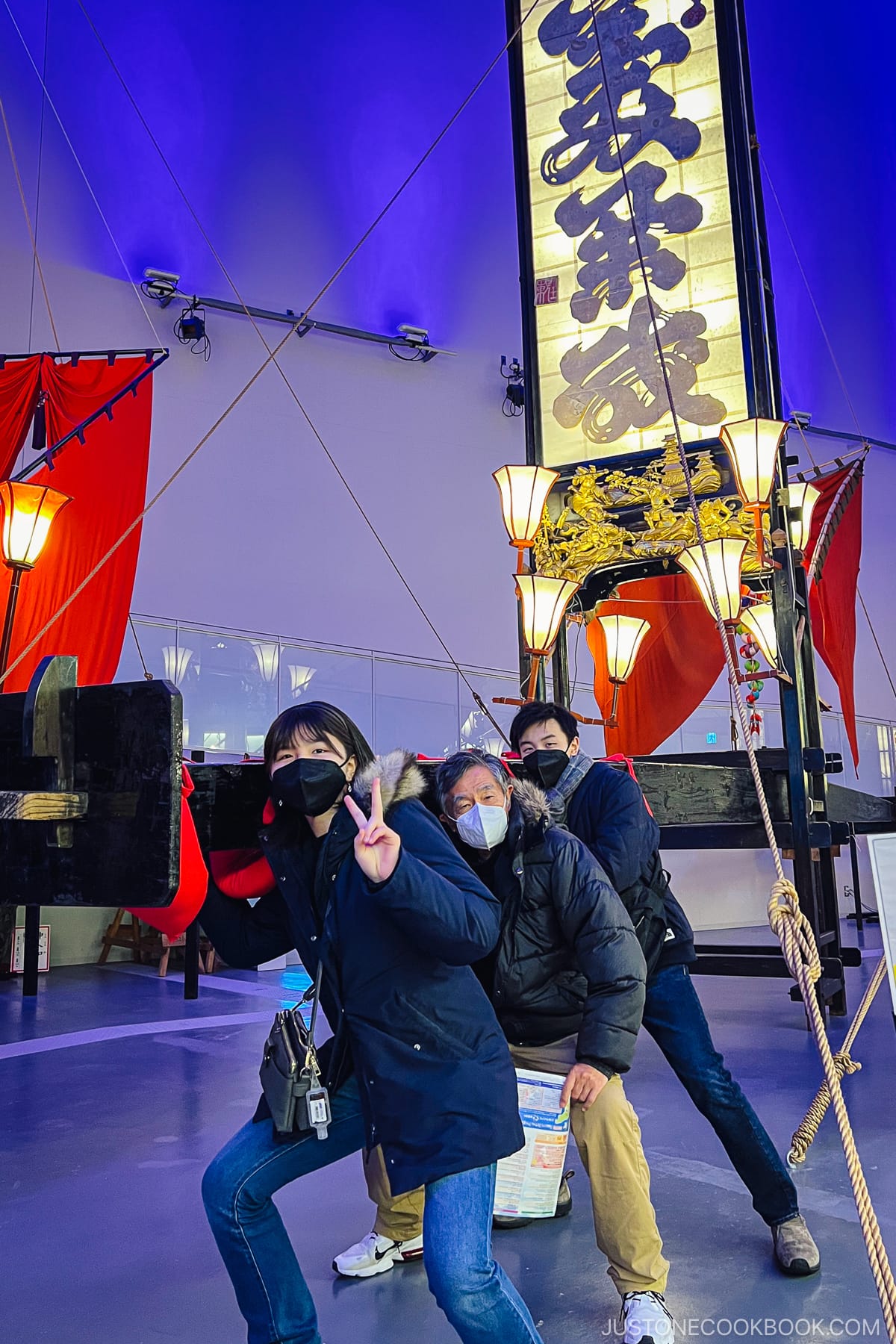
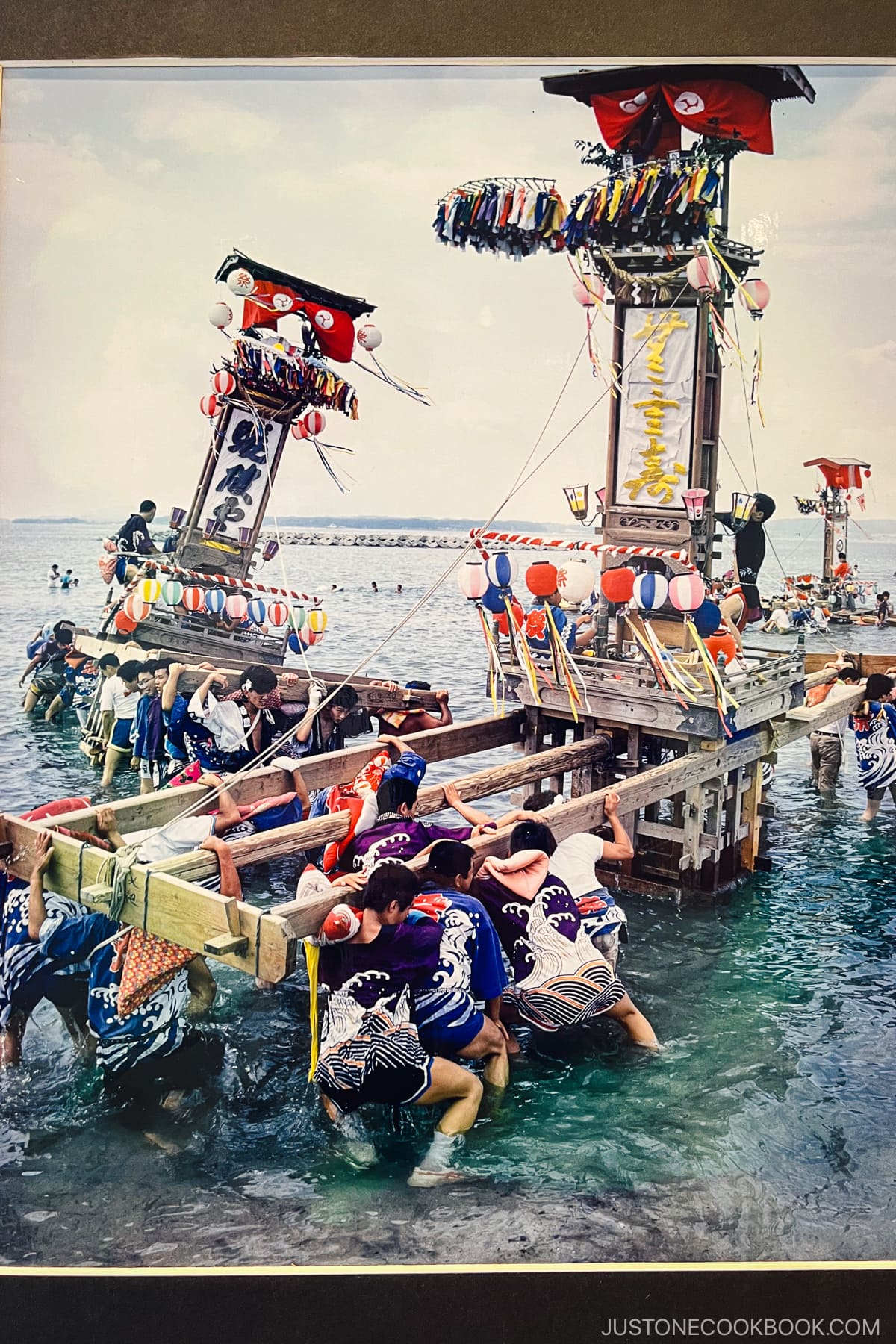
Wajima Museum of Lacquer (Urushi) Art 石川県輪島漆芸美術館
The next stop we recommend is Wajima Museum of Lacquer (Urushi) Art. Opened in 1991, it is the only museum in Japan dedicated to lacquer art. The museum exhibits show:
- Techniques and history of Wajima lacquerware
- Transformation of wood to lacquerware
- Lacquerware pieces from different time periods and places throughout Japan and the world
- How a team of local artisans spent 5 years to make the lacquer globe on display (view the making of the globe video here, it’s very interesting)
Unfortunately, the only area in the museum that allows photography is the giant lacquer globe so we can’t share much. The globe represents the world seen at night from space.
In a short time spent at the museum, we learned a great deal about the intricate artistry and the richness of technique involved in making these pieces. We couldn’t help but develop a strong sense of appreciation for the art form.
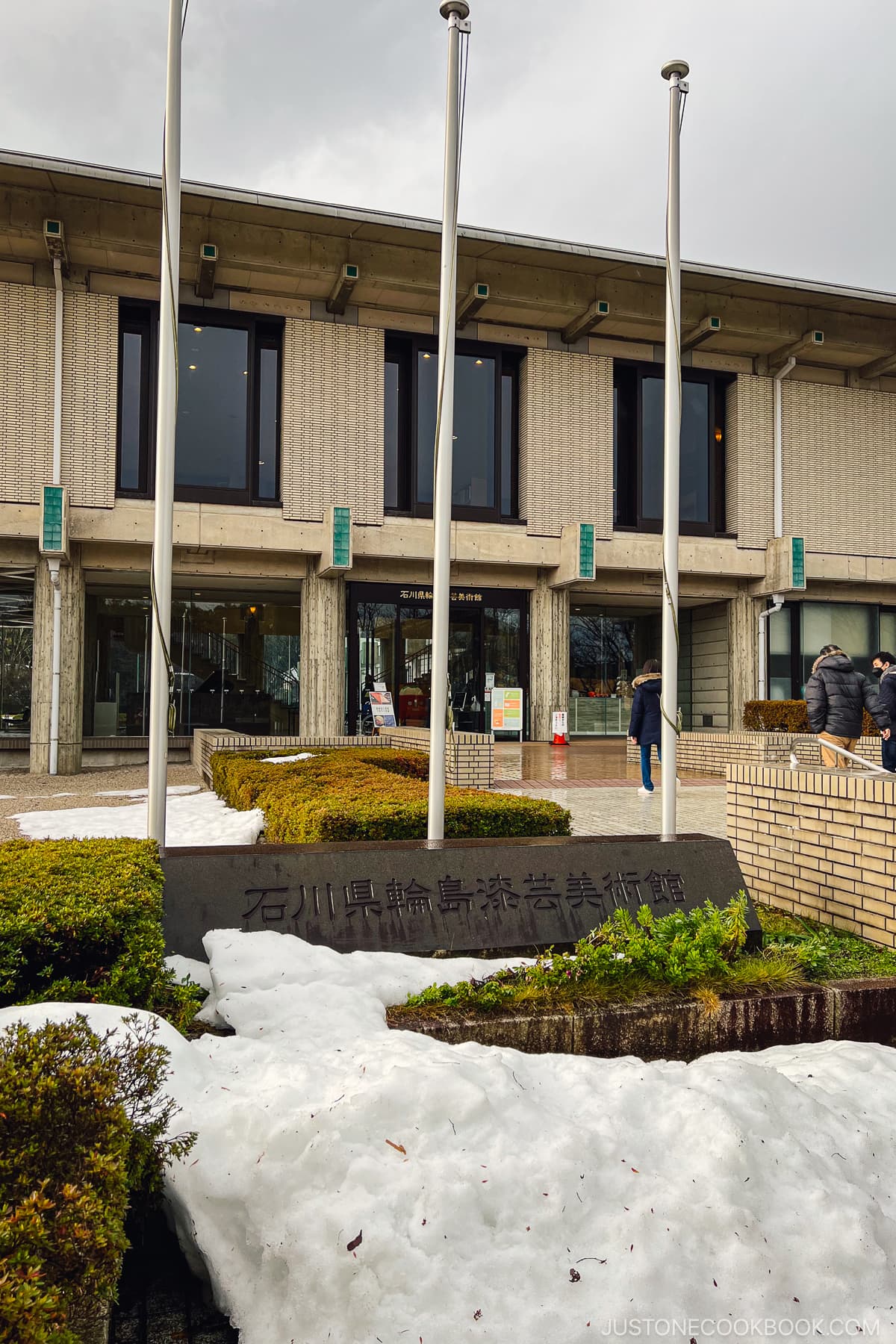
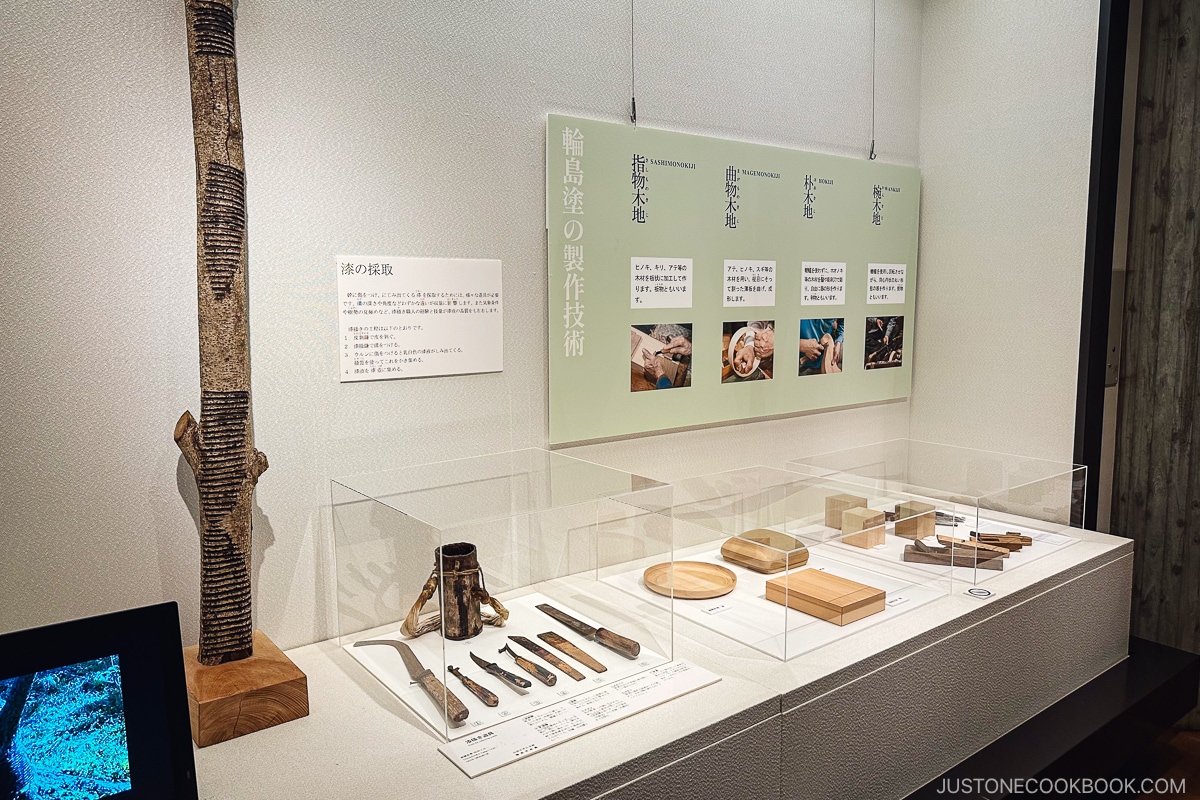
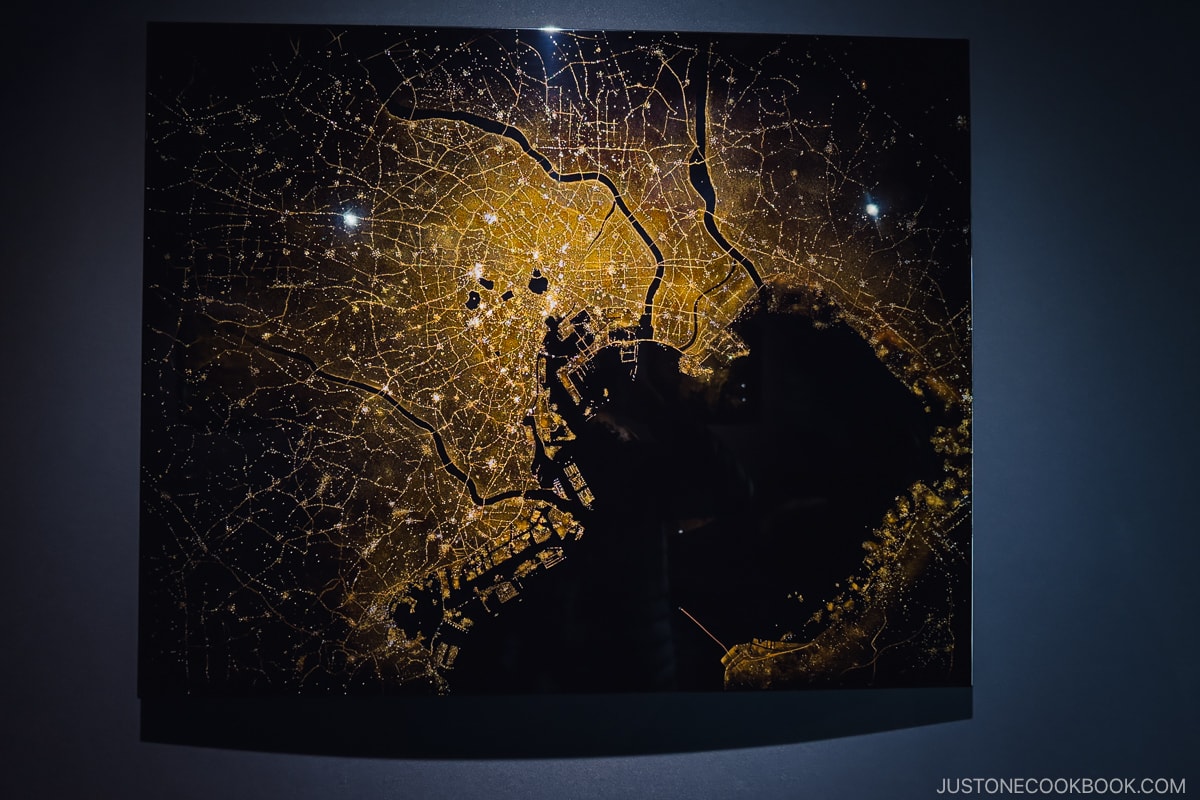
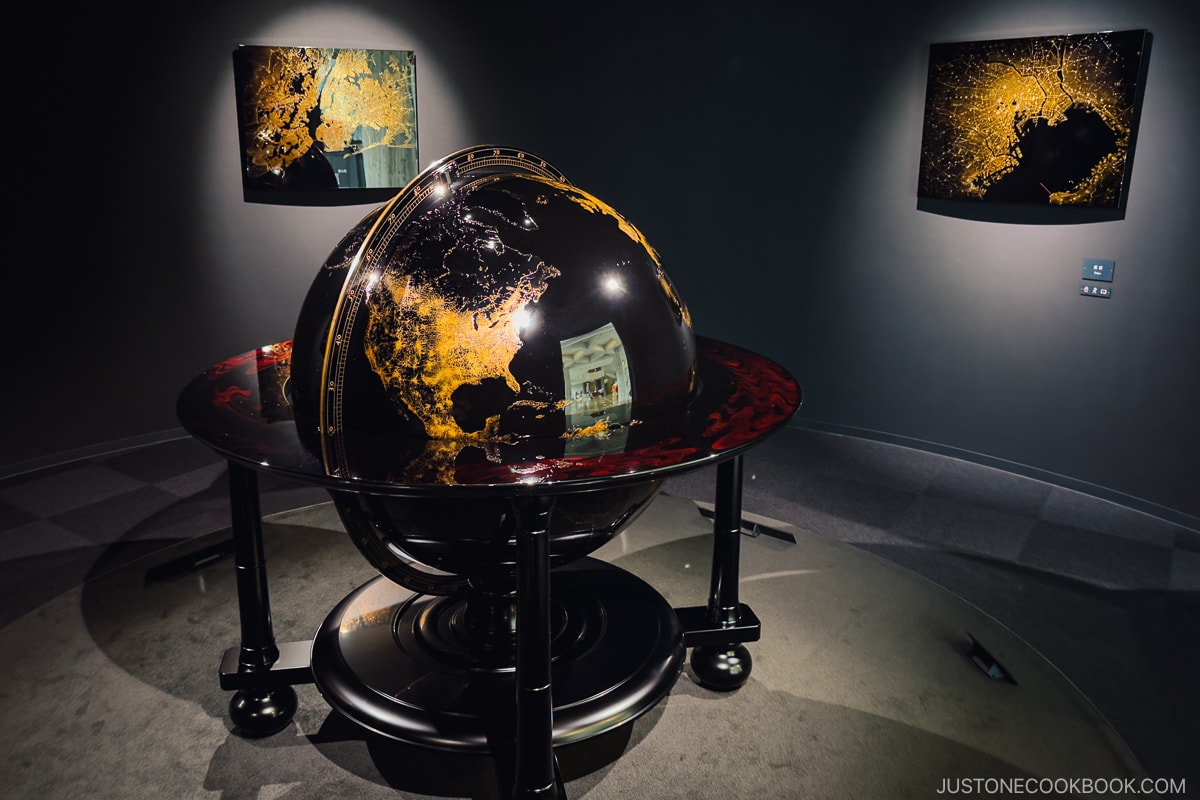
Shioyasu Shikki Kobo – Lacquer Factory しおやす漆器工房
We visited Noto Peninsula around the New Year so not many shops were open. One of the few shops that were open is Shioyasu Shikki kobo, a lacquer shop that offers workshop demonstrations on how the pieces are created. The store has been around since 1858 and carries a variety of lacquerware, from simple chopsticks to soup bowls to large coffee tables and screens made entirely of lacquer.
It takes 5-6 months to make a single lacquerware and the store was very kind to explain to us their production process. The amount of detail that goes into creating a simple soup bowl is incredible.
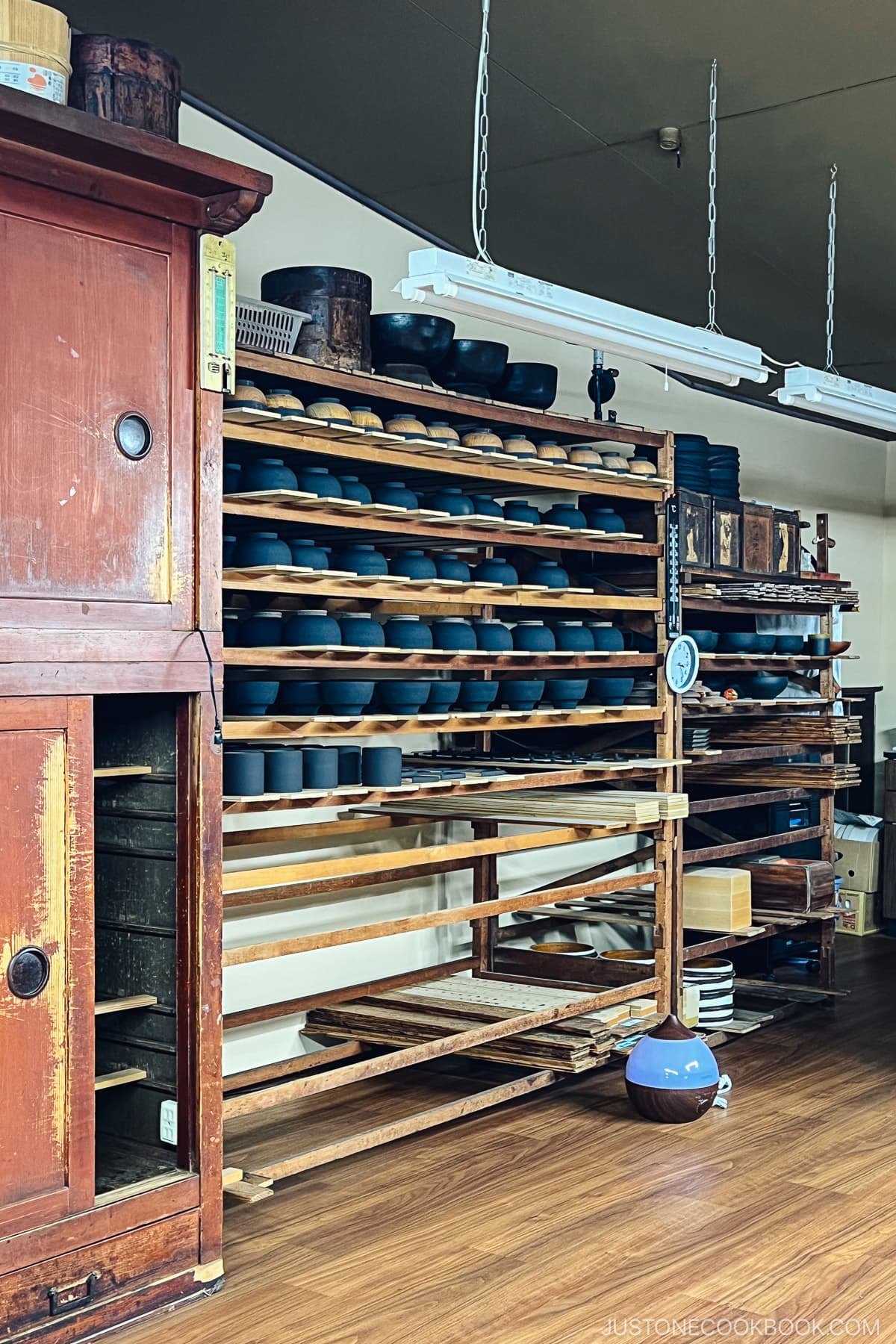
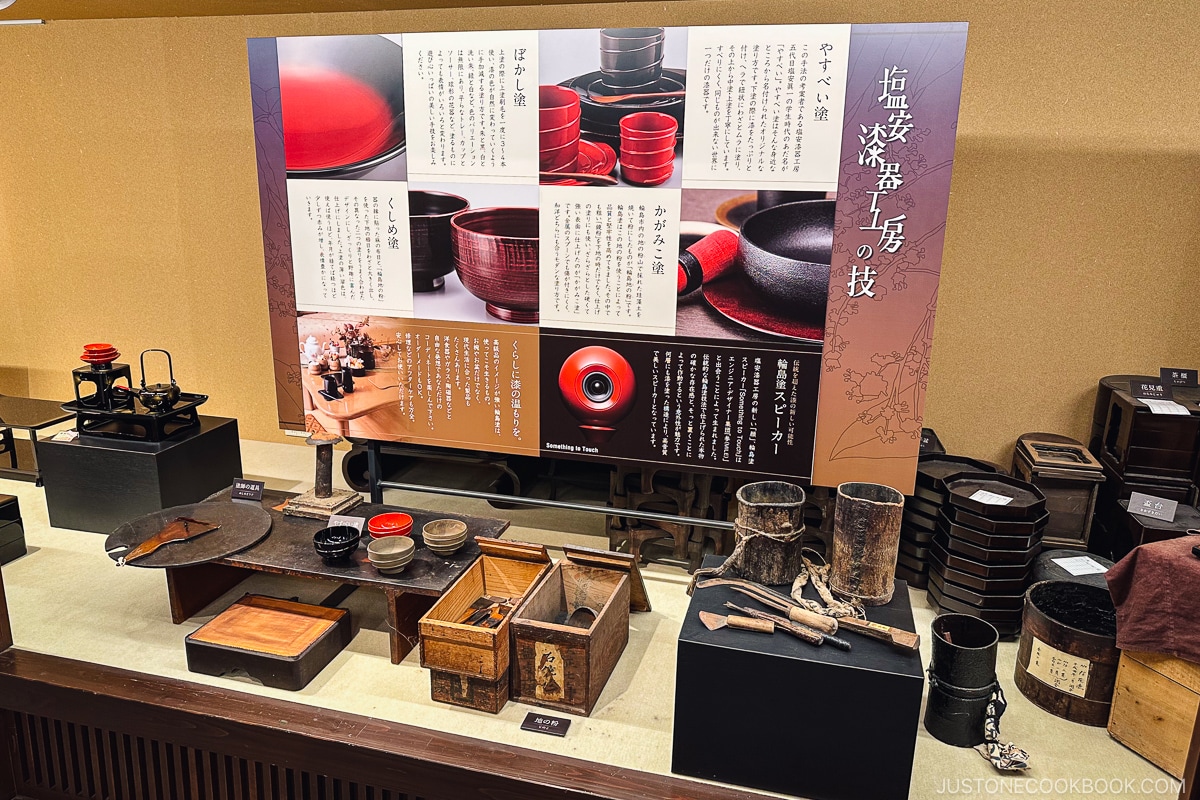
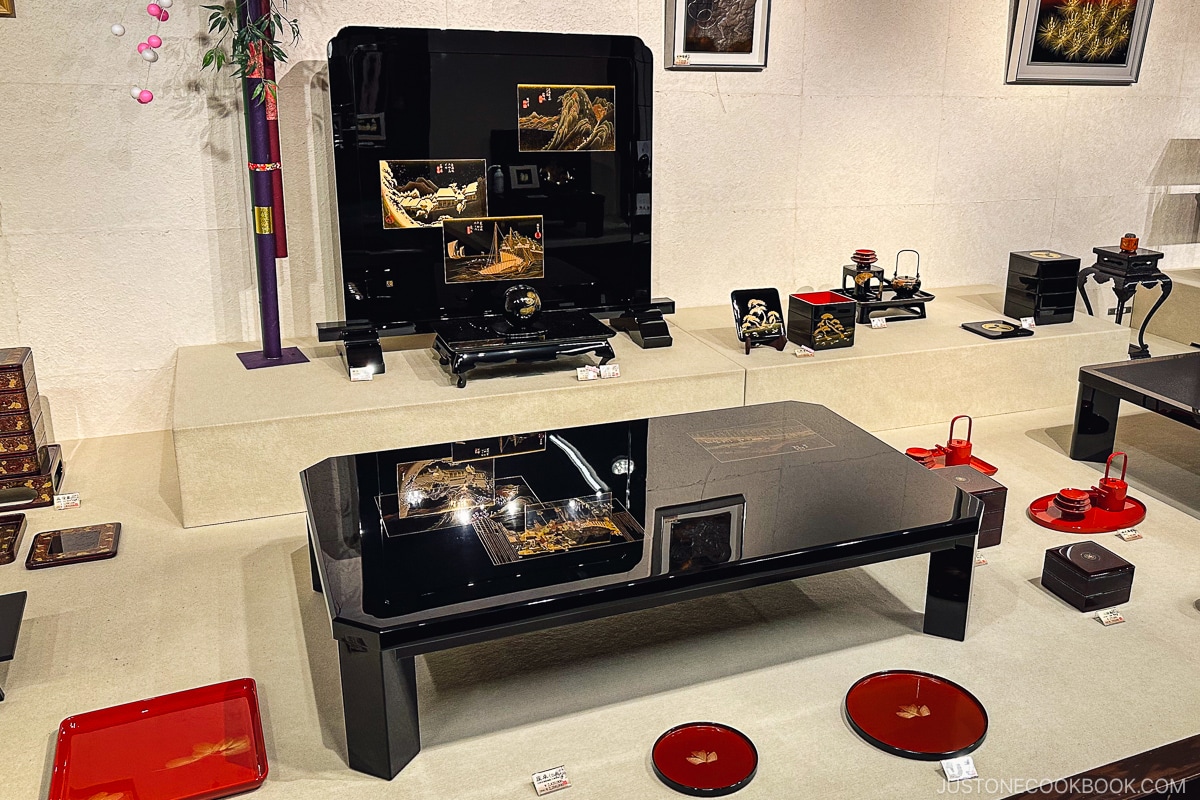
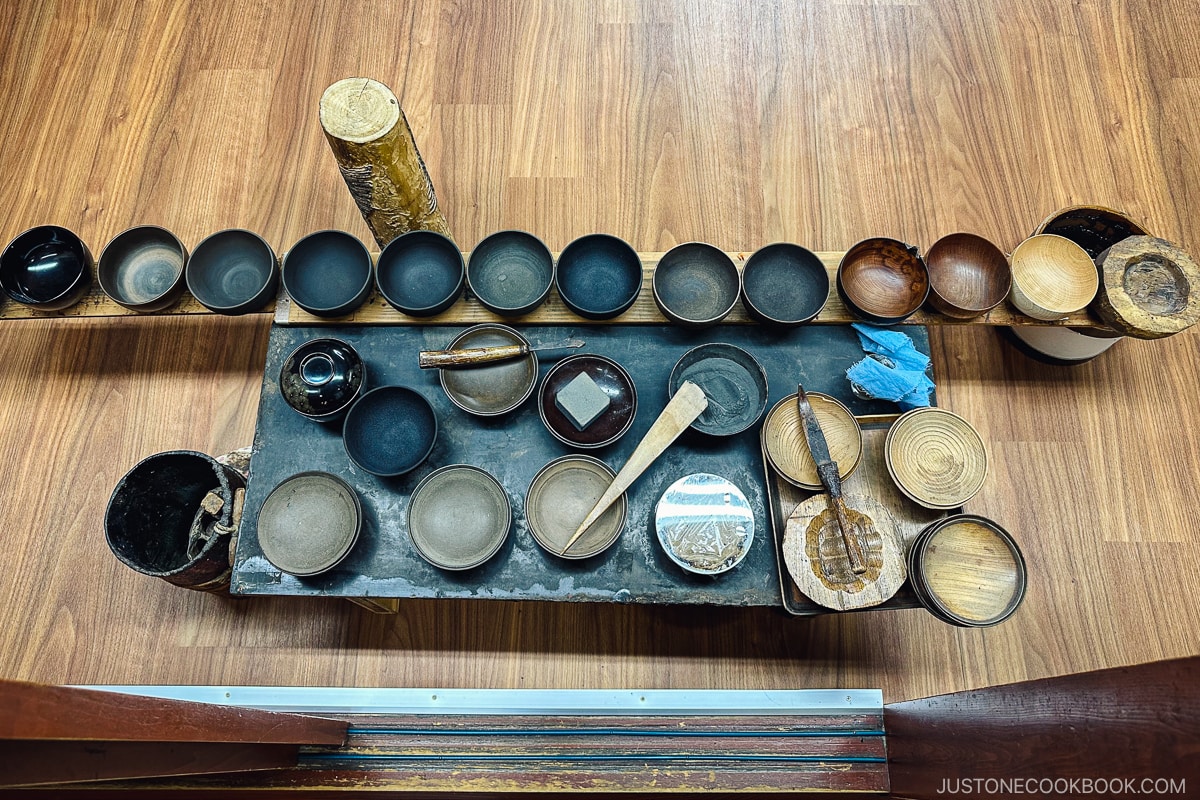
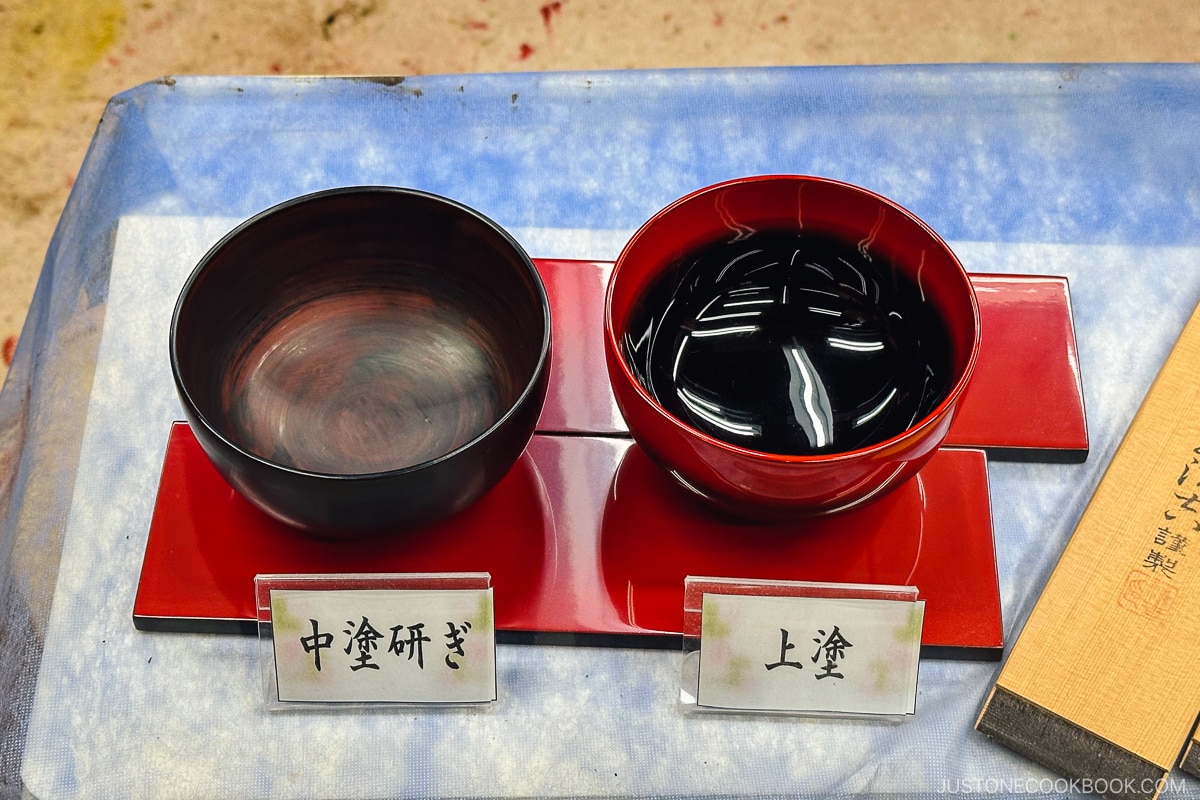
Shiroyone Senmaida Rice Terraces Winter Lights 白米千枚田
We saved the most well-known sight in Noto Peninsula for last, the Shiroyone Senmaida Rice Terraces. There are 1,004 rice fields (senmaida means 1,000 rice fields) at the location covering an expansive area. From Oct – March each year, the rice terraces are lit up with 25,000 LED lights and change color every 15 min. Each time the fields lit up in different color, our hearts pulsed along. The beauty and the emotion the views evoked is indescribable.
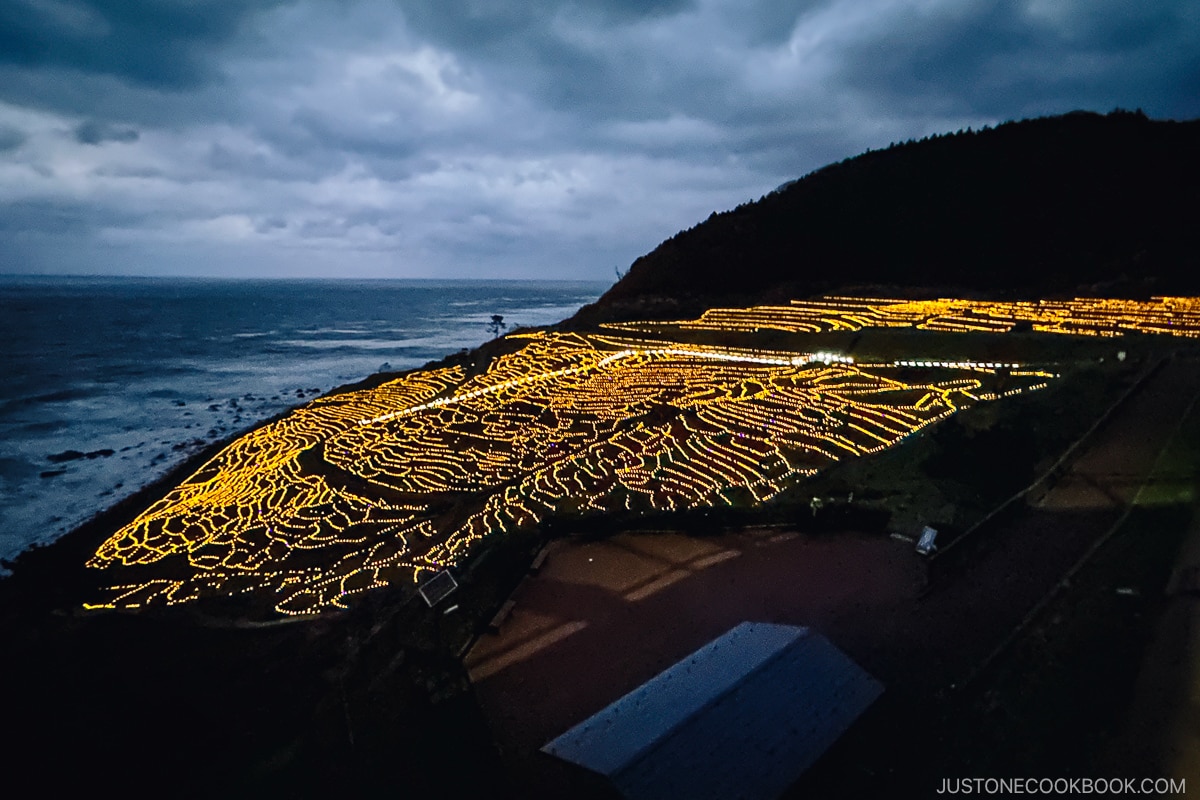
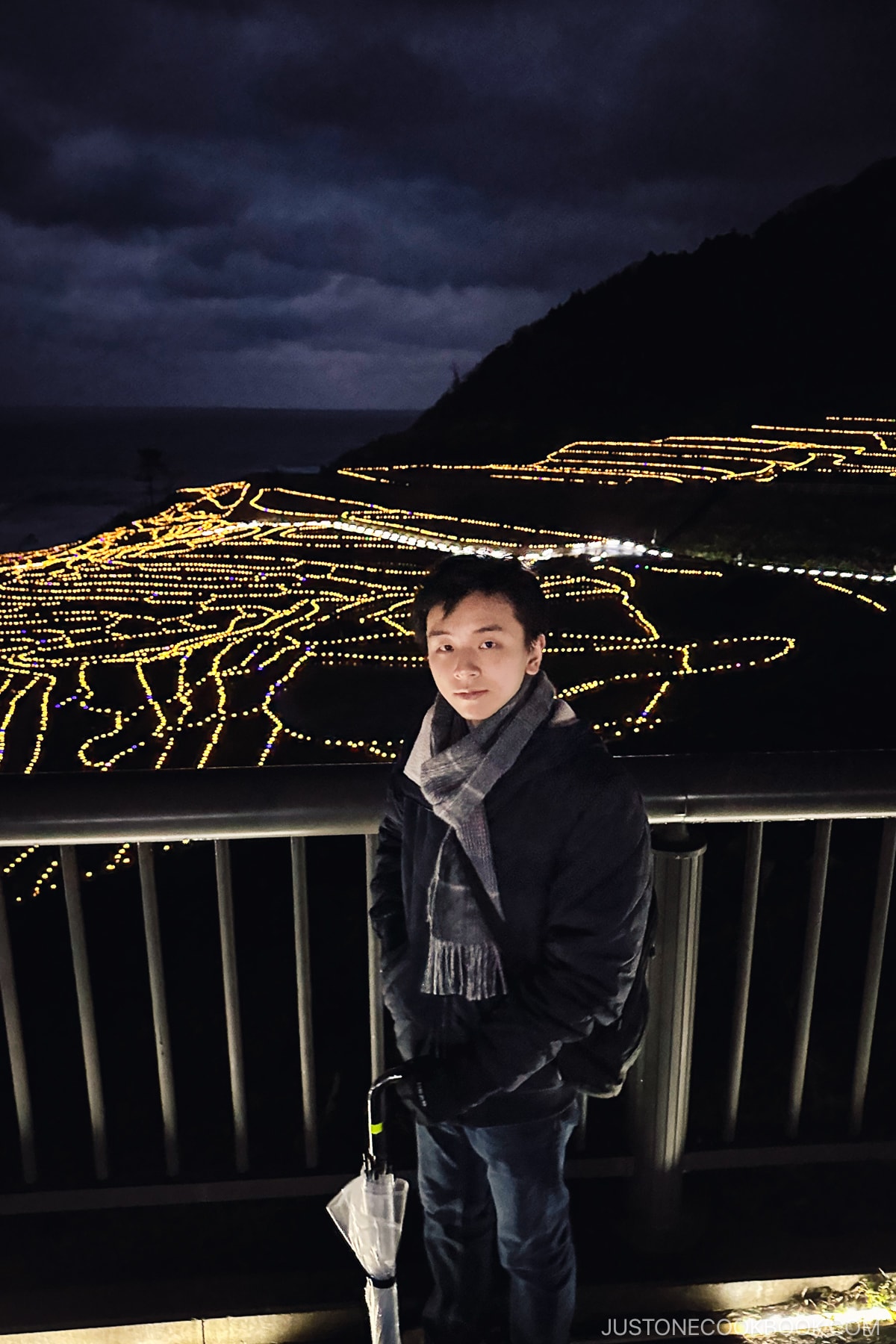
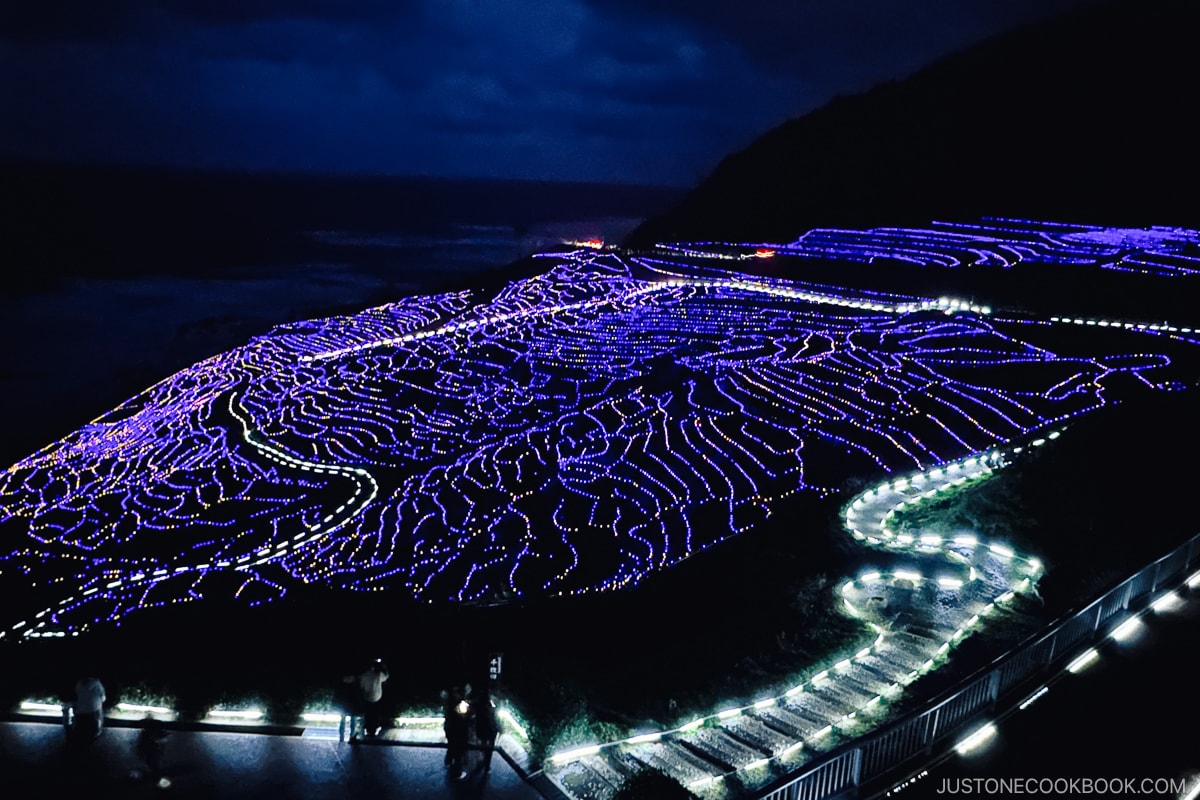
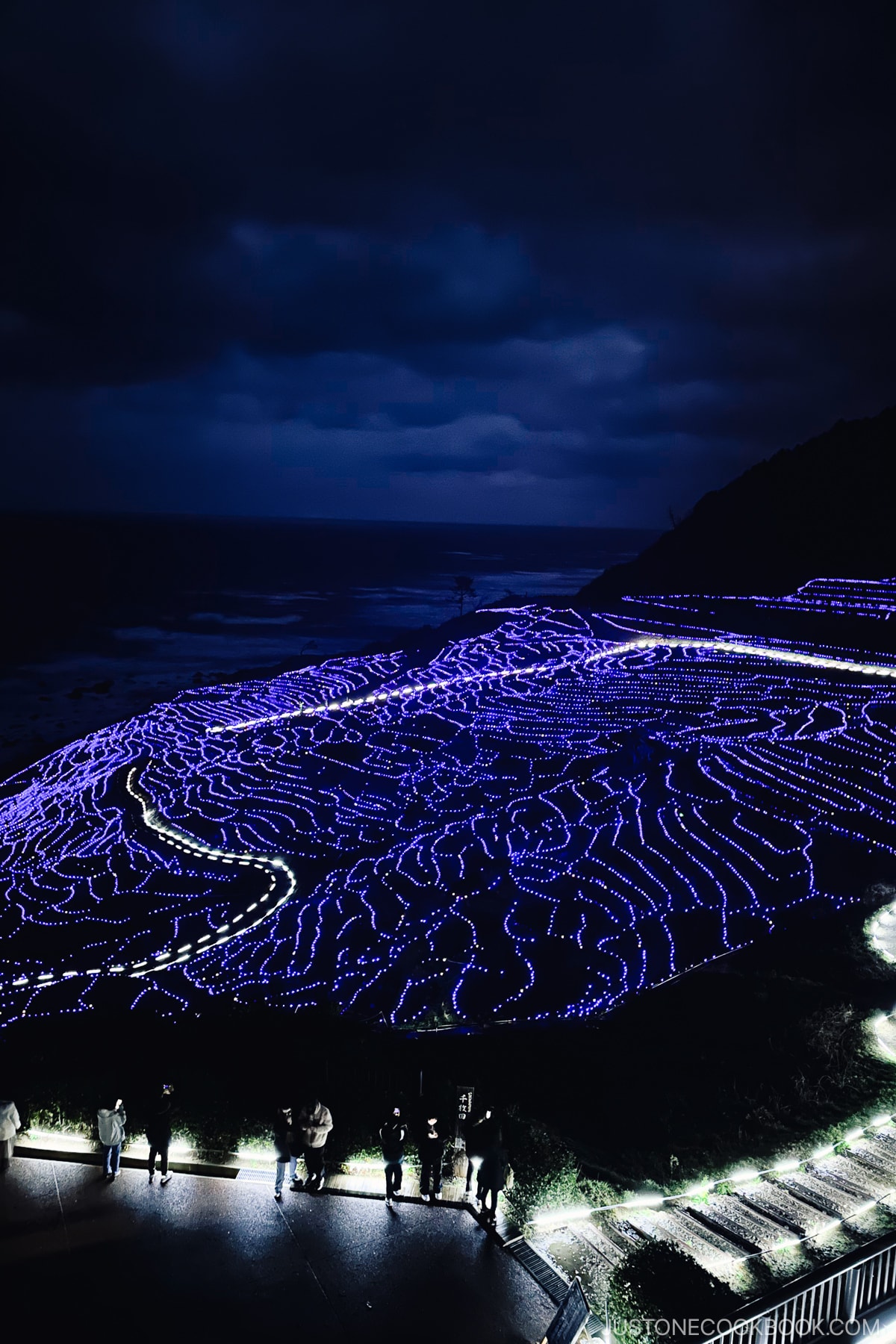
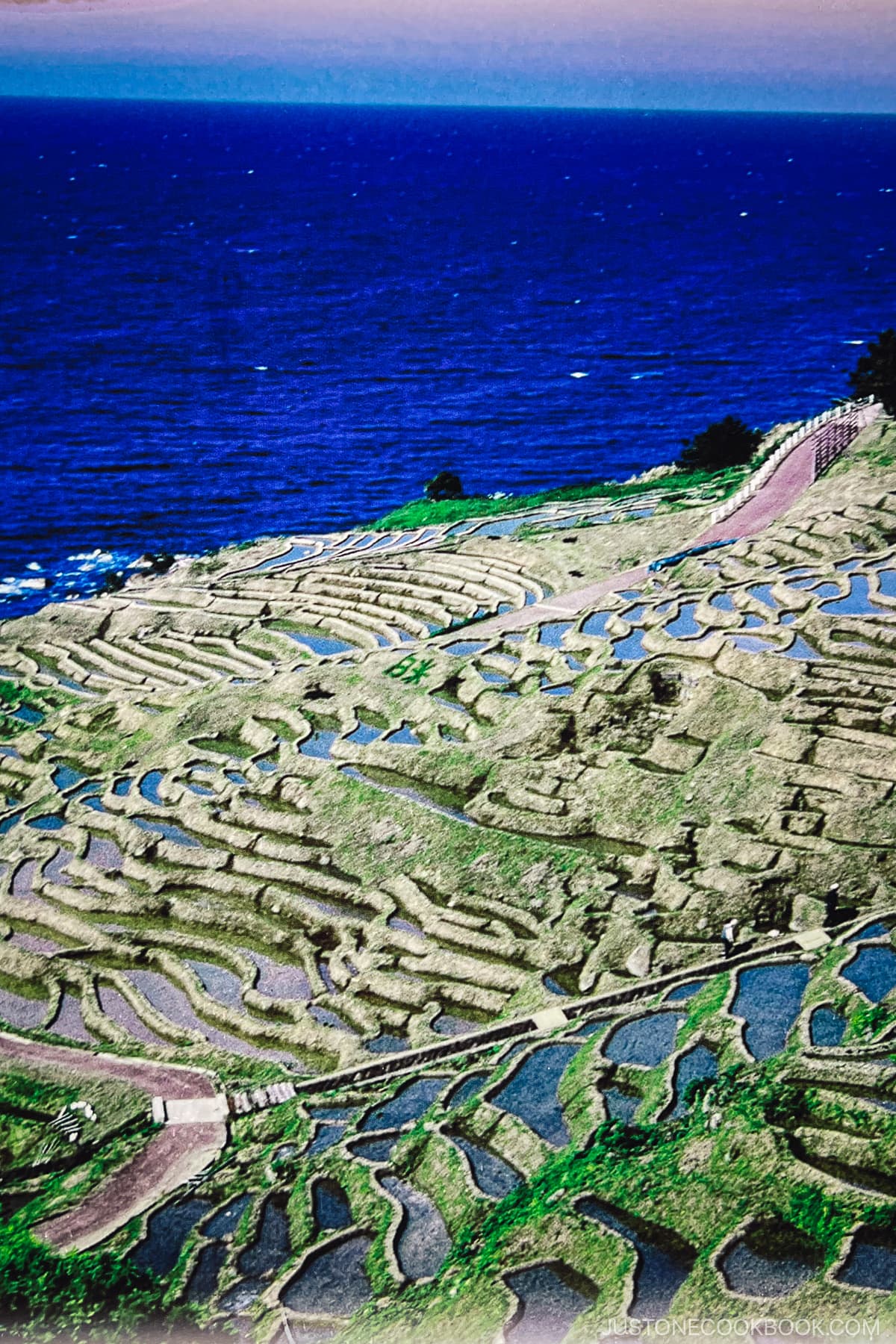
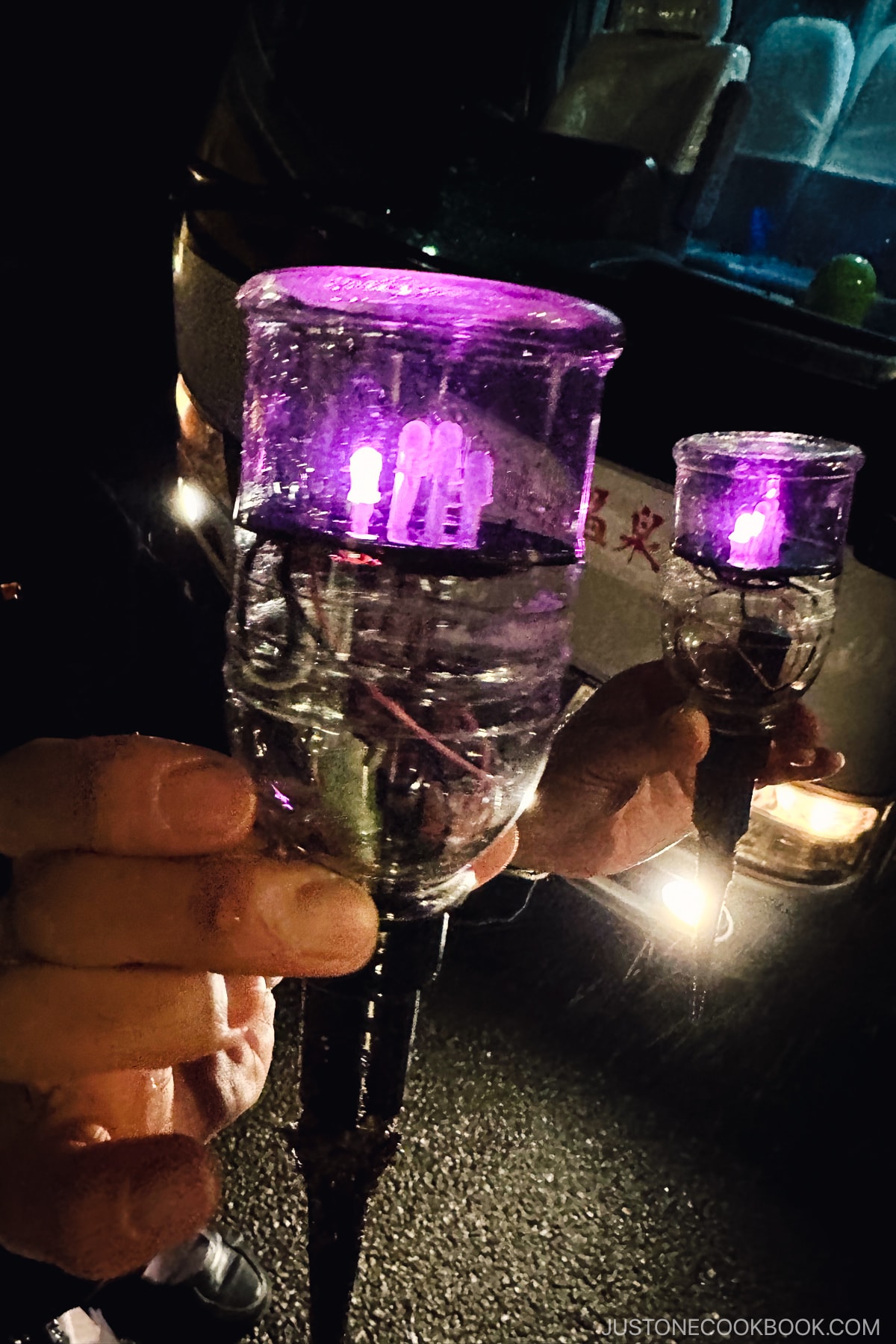
Noto No Show Ryokan 海游 能登の庄
We spent 2 nights at Noto No Show ryokan including New Year’s eve and New Year’s night, so part of the meals were served with osechi dishes. The ryokan is very clean and the service was excellent, however, the decor is a bit dated.
Our ryokan plan included both breakfast and dinner and being right next to the sea, many of the dishes are seafood-focused. We got to try the well-known local food like Noto blowfish and notoguro (black throat perch).
The overall quality of the food was good, but what stood out to us was they were served in beautiful Wajima lacquerware or Kutanyakiware from nearby Kaga. The beautiful dinnerware helped elevate the food and created a truly local dining experience for us.
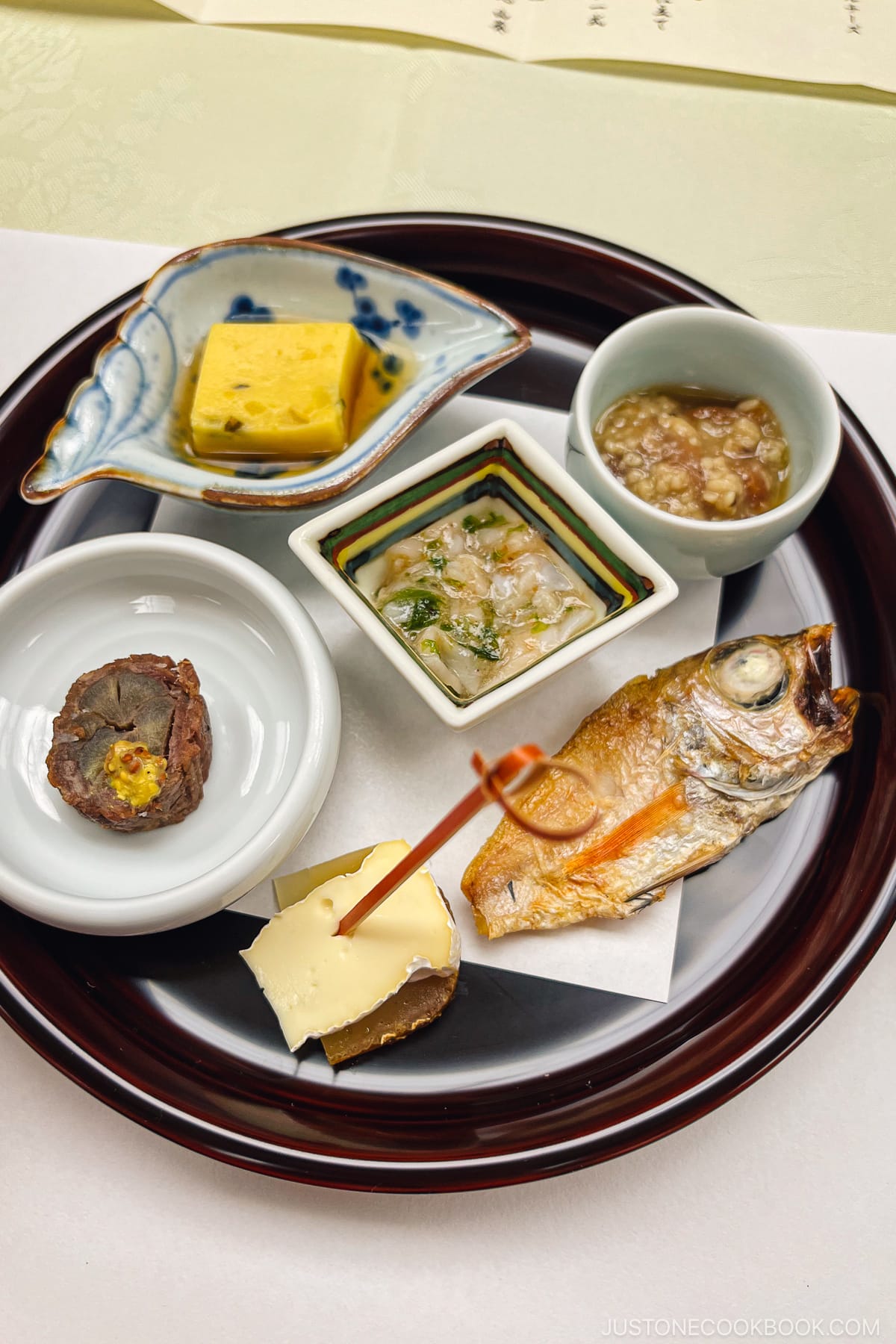
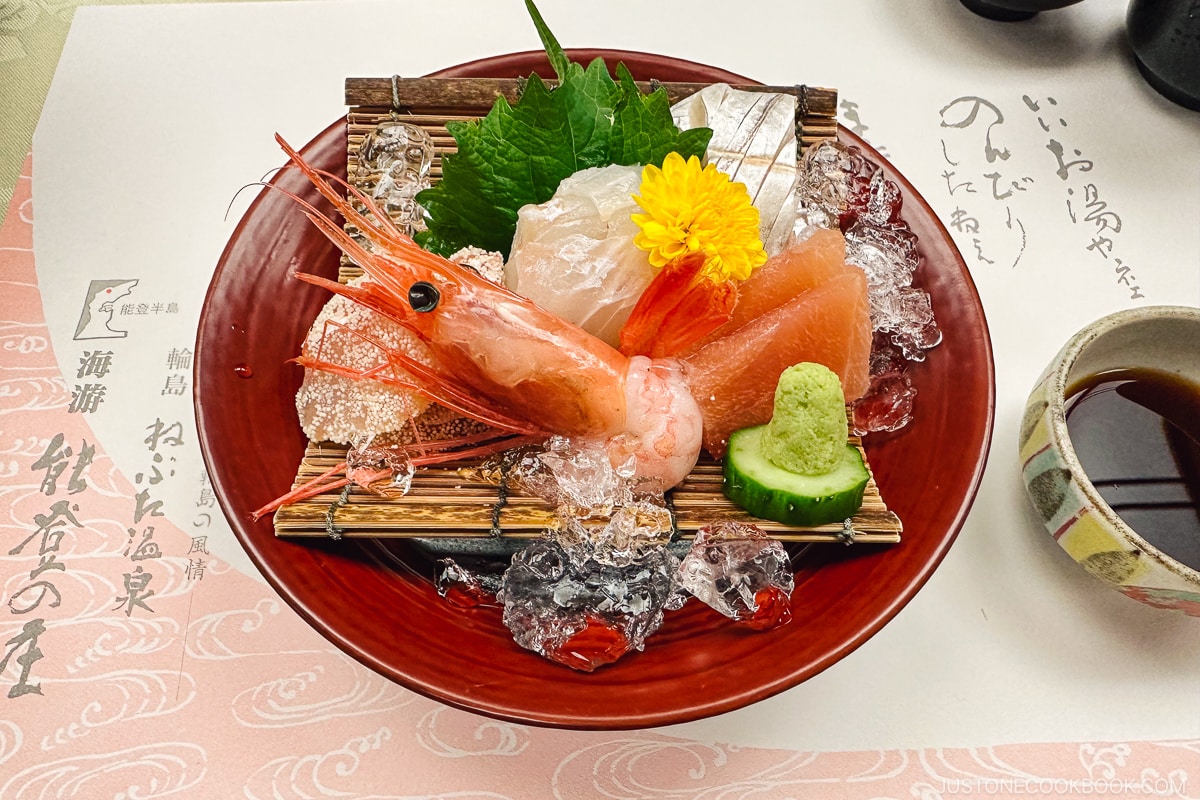
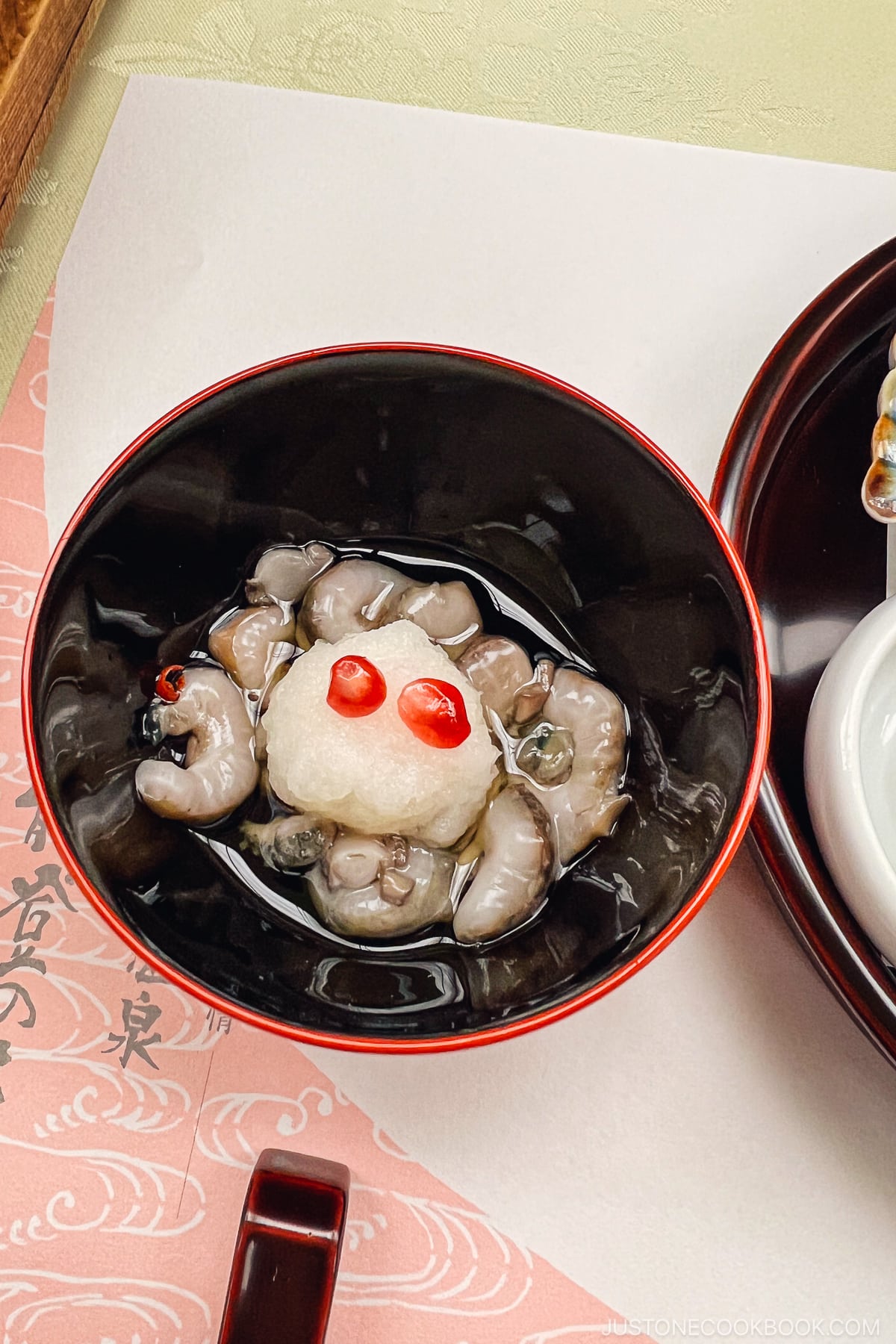
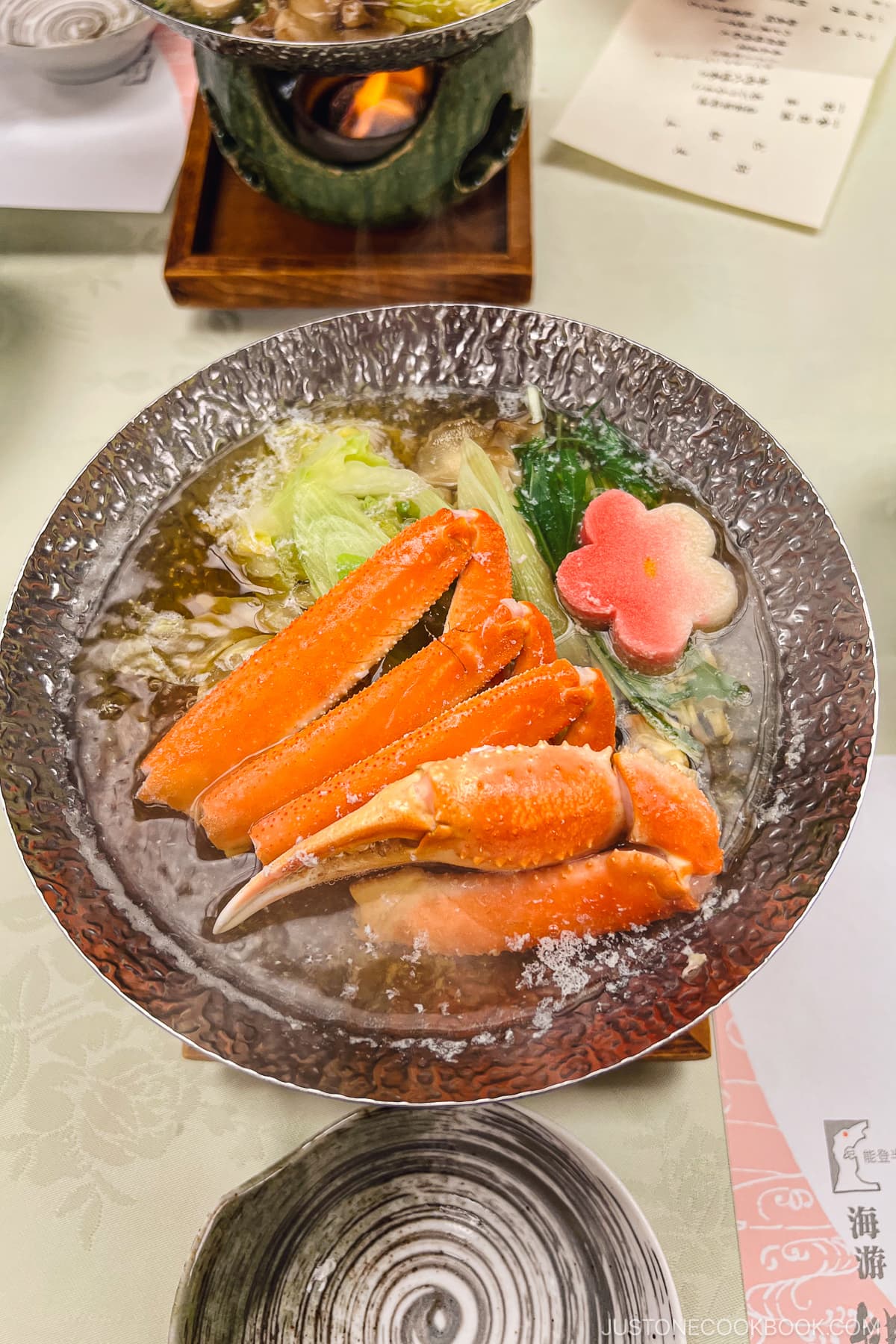
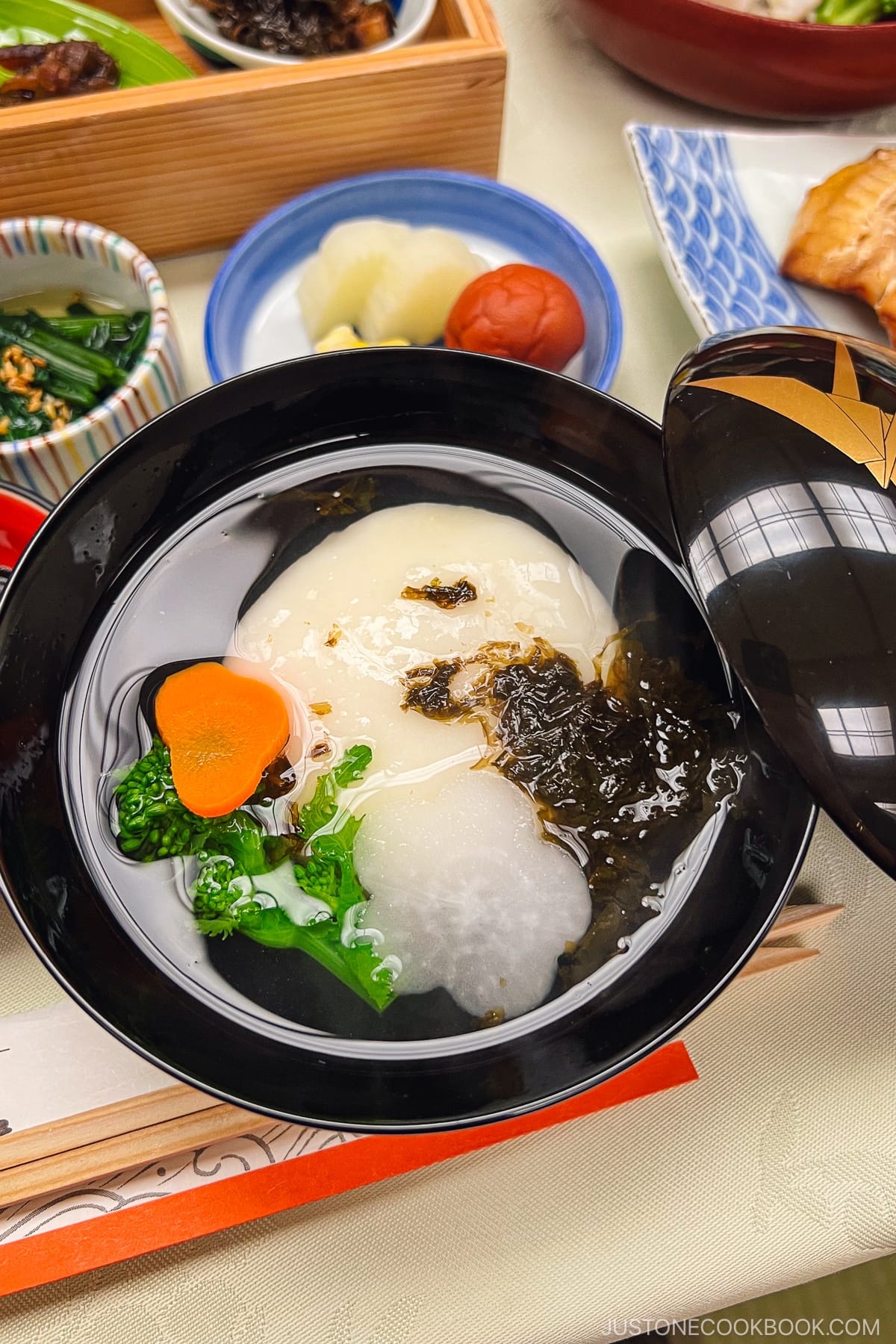
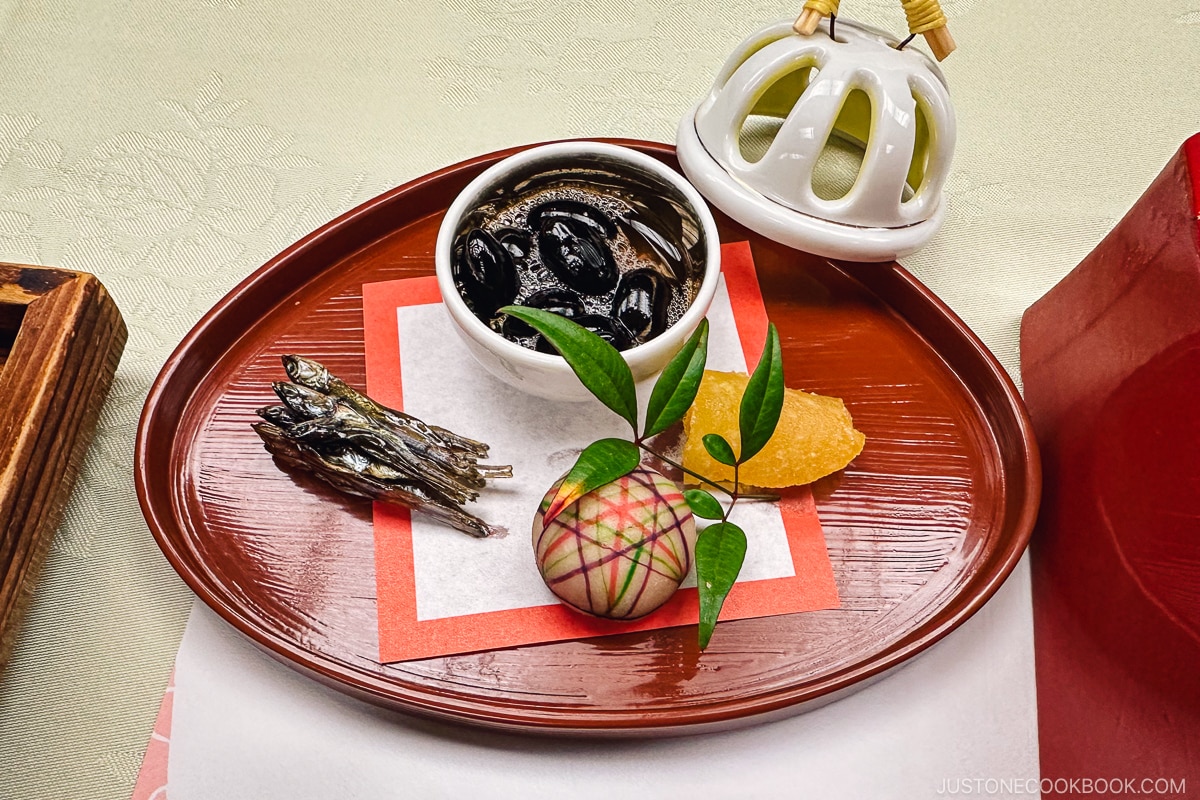
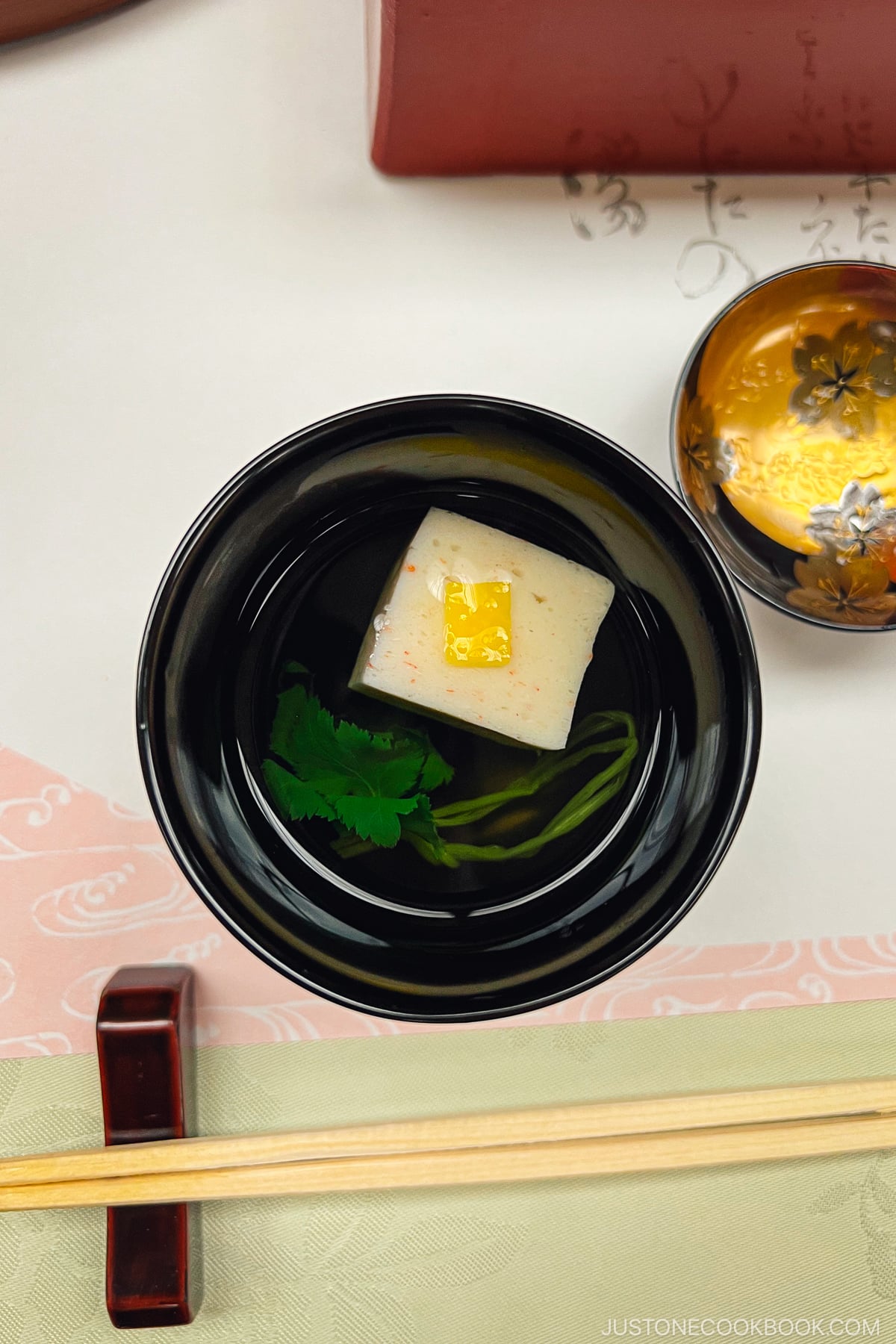
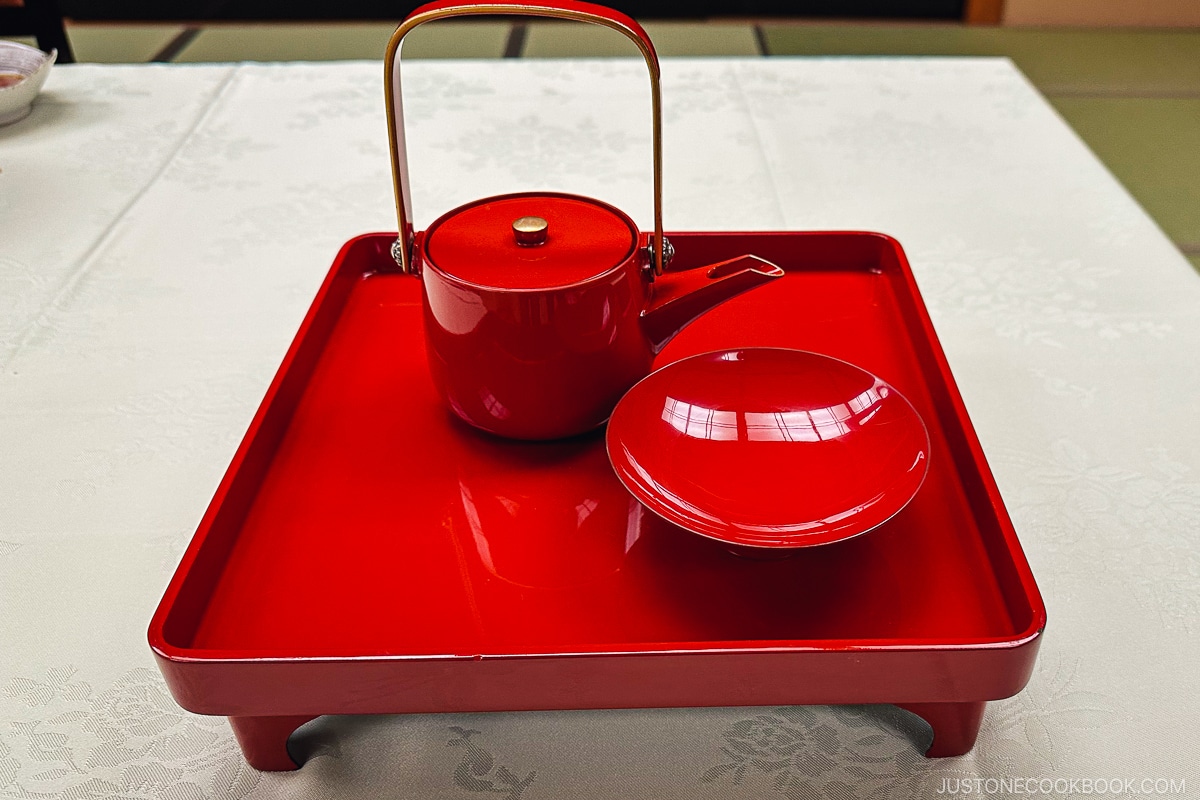
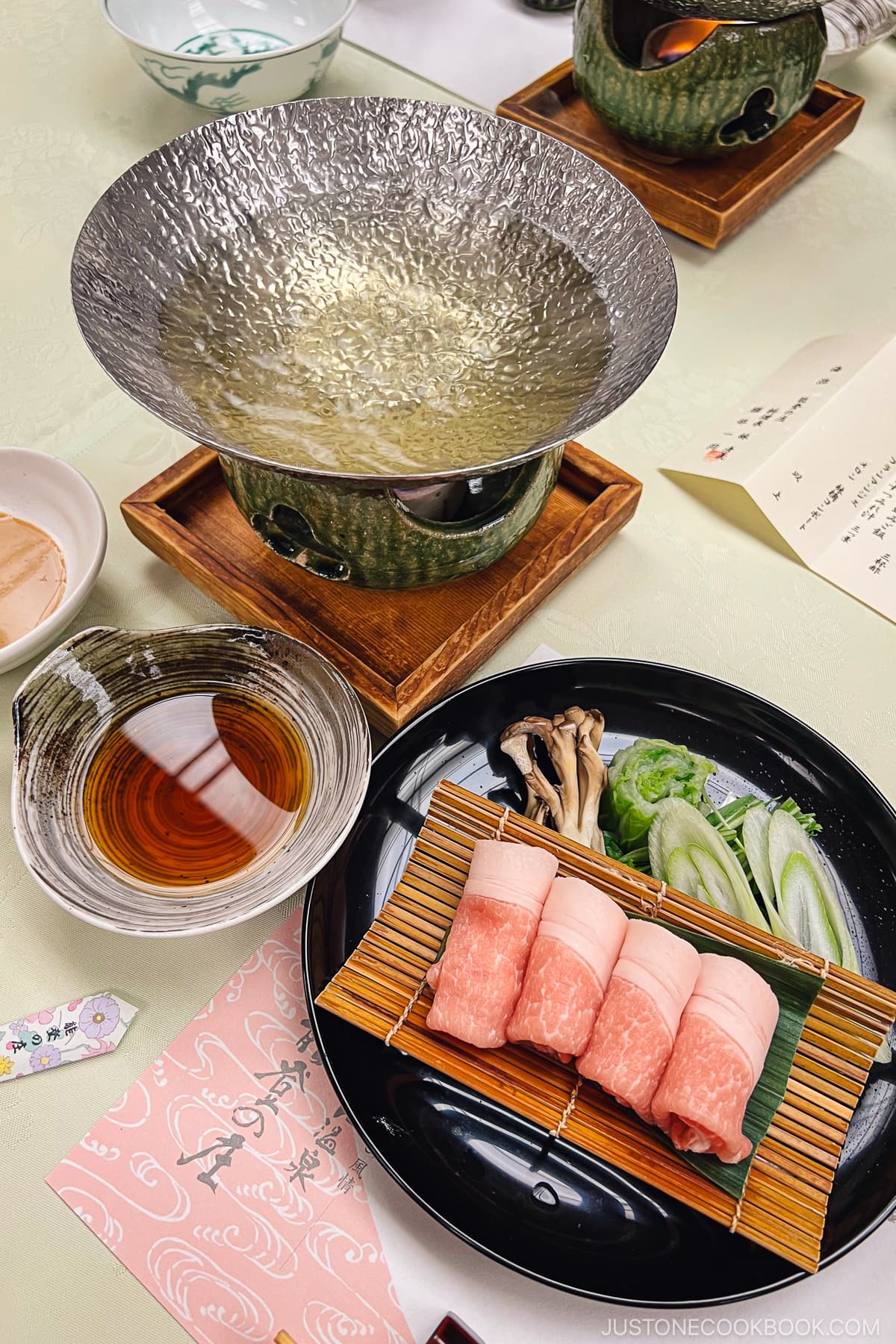
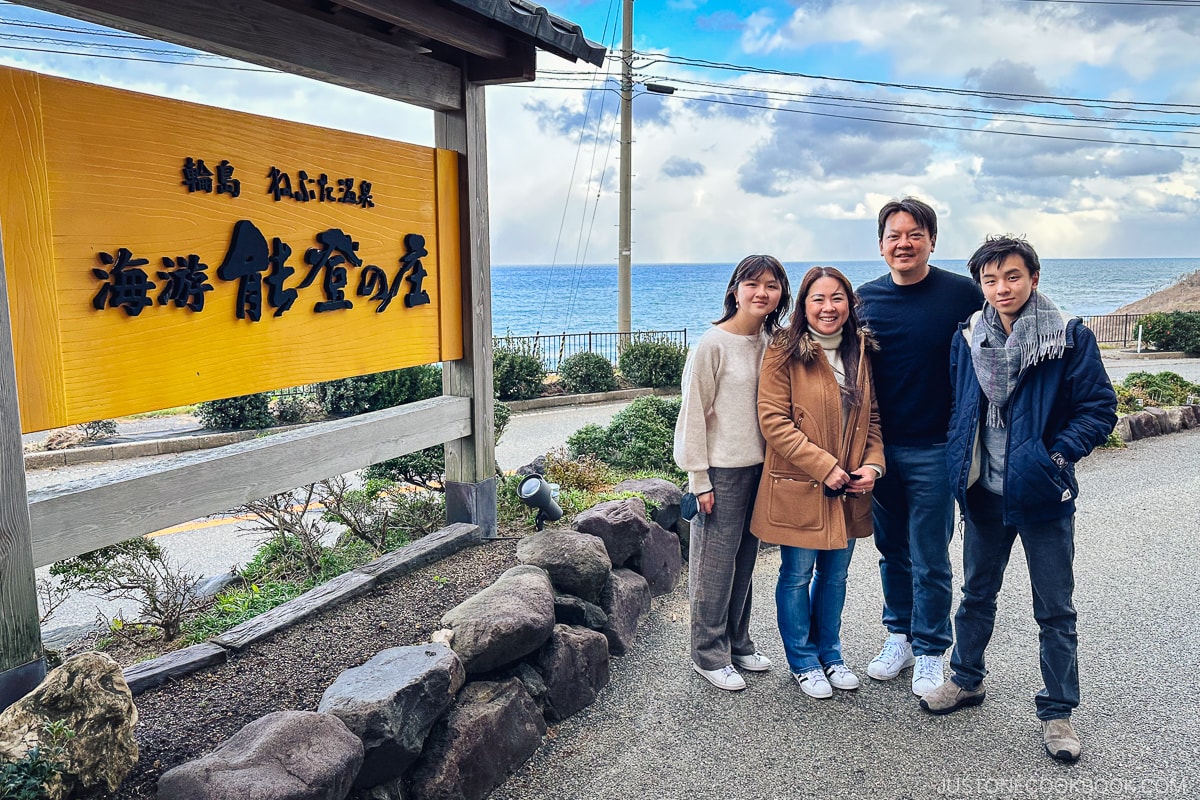
Travel Tips for Noto Peninsula
Our family had a great time visiting Noto Peninsula. From historic shrines to learning about the local culture and lacquerware, it was an enriching experience. Based on our trip, here are some of the travel tips we have for visiting.
- To see all the sights is by far the easiest and fastest with a car. There is plenty of public transportation available but it’s not as easy to get around compared to other more visited areas in Japan.
- Winter is very cold by the Sea of Japan. When we were at Shiroyone Senmaida Rice Terraces at night, it was difficult to stay outside for more than 20 min due to the cold wind. Remember to dress appropriately based on the season.
- Many foods will be seafood based in the area, if you are allergic or not a fan of seafood please keep this in mind when planning your visit.
- Many tourists go to Nanao City and stay at Kagaya ryokan when visiting Noto. It’s more tourist-friendly with some sightseeing available. It’s an option for those without a car but it will be a different experience.

